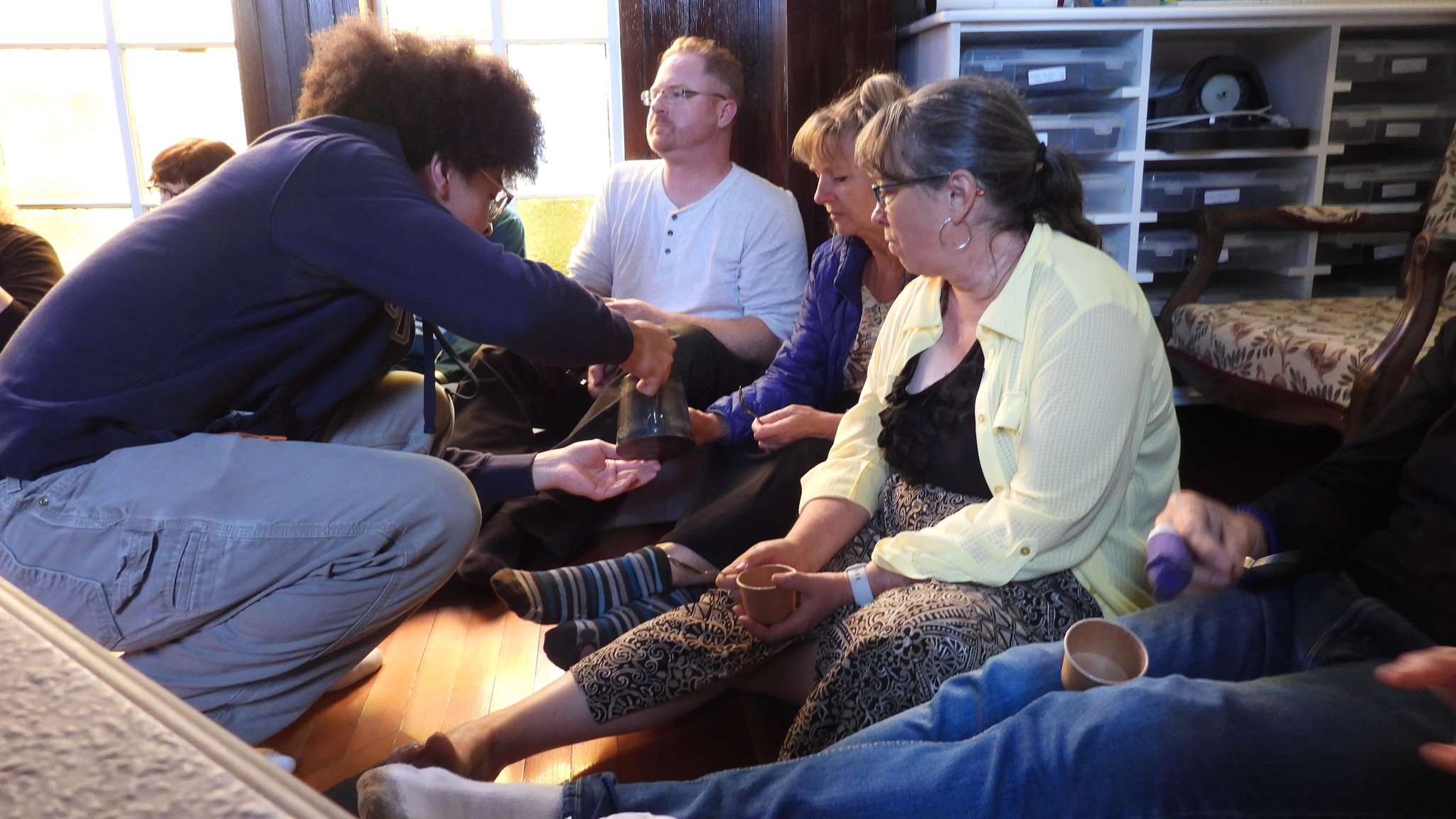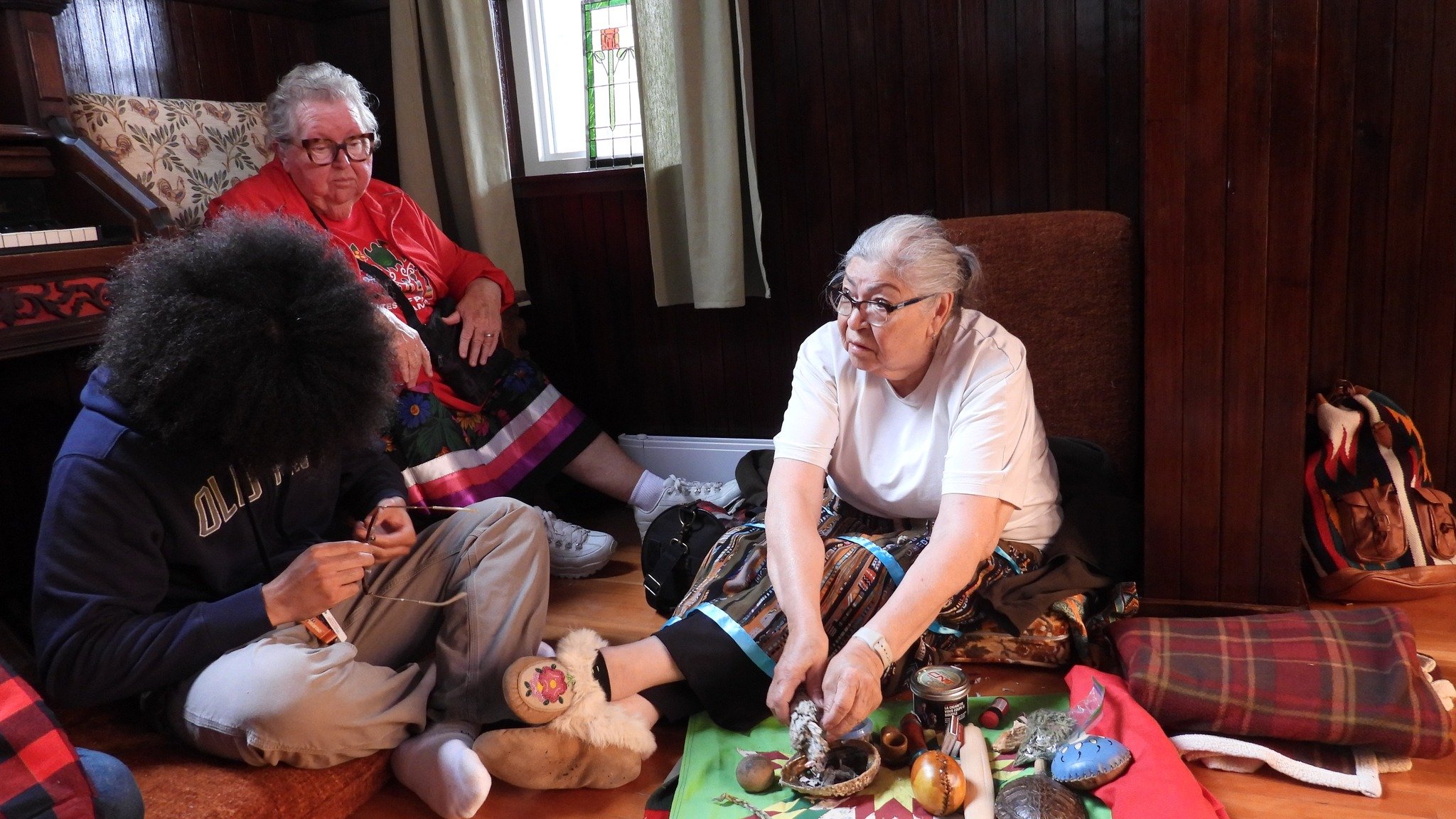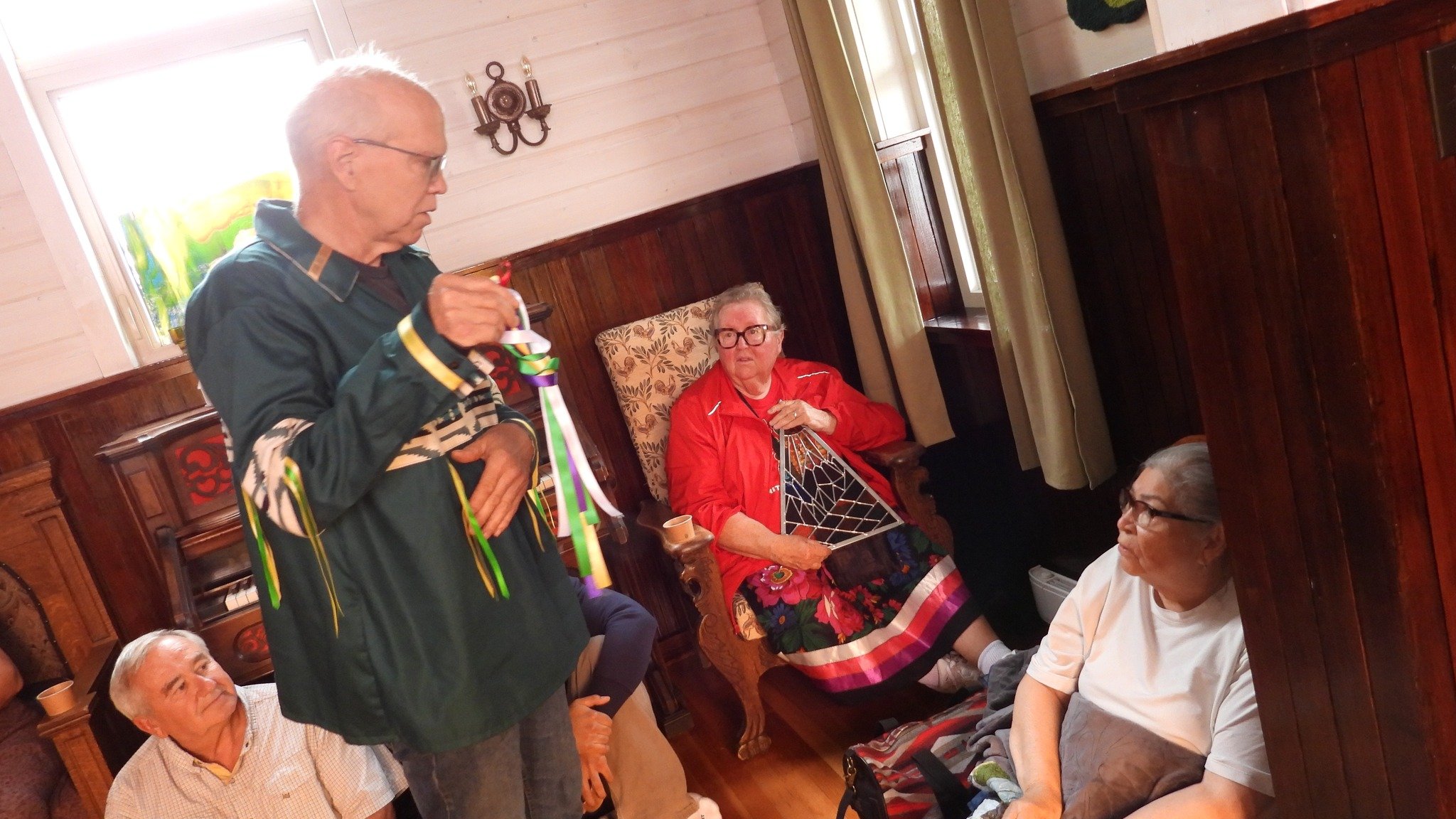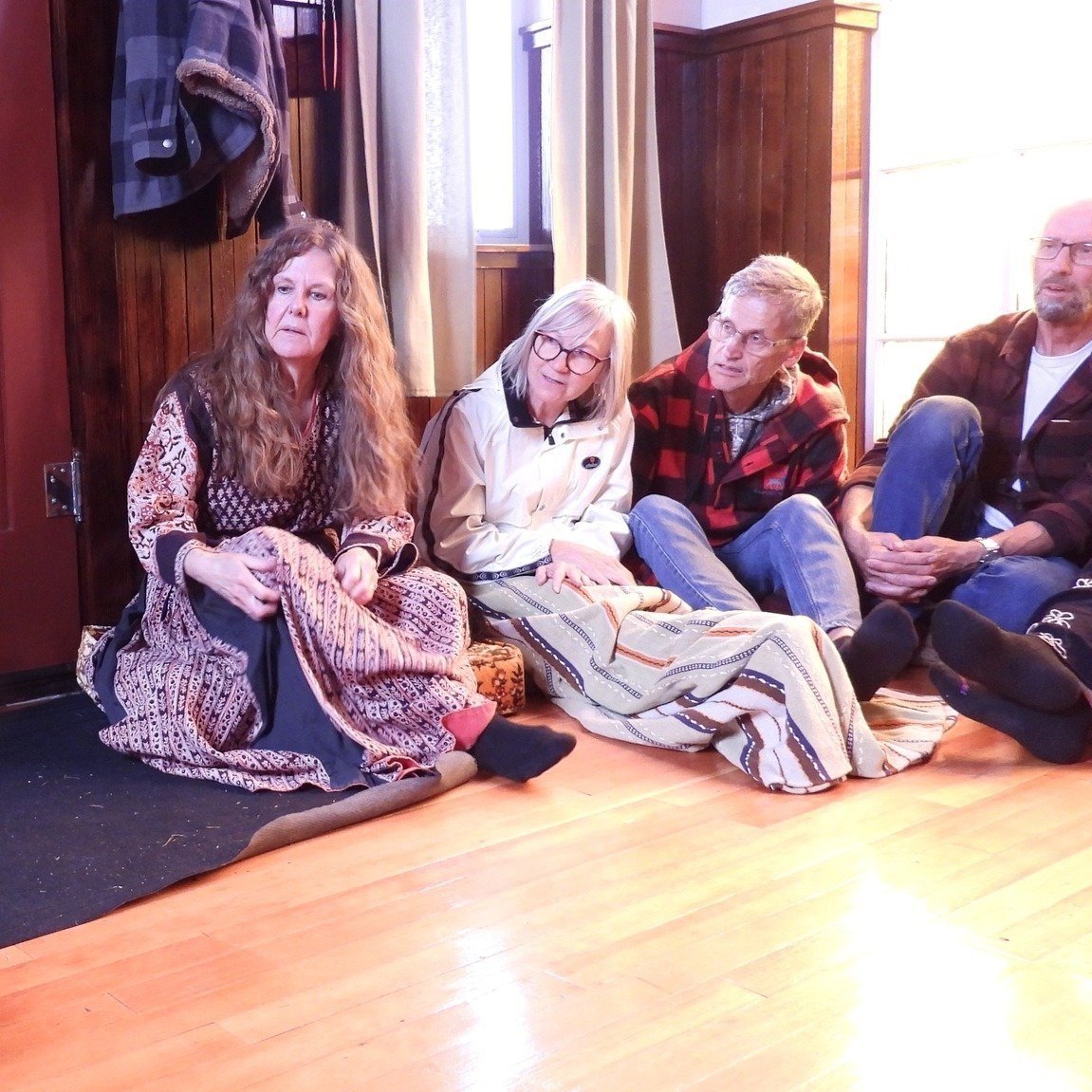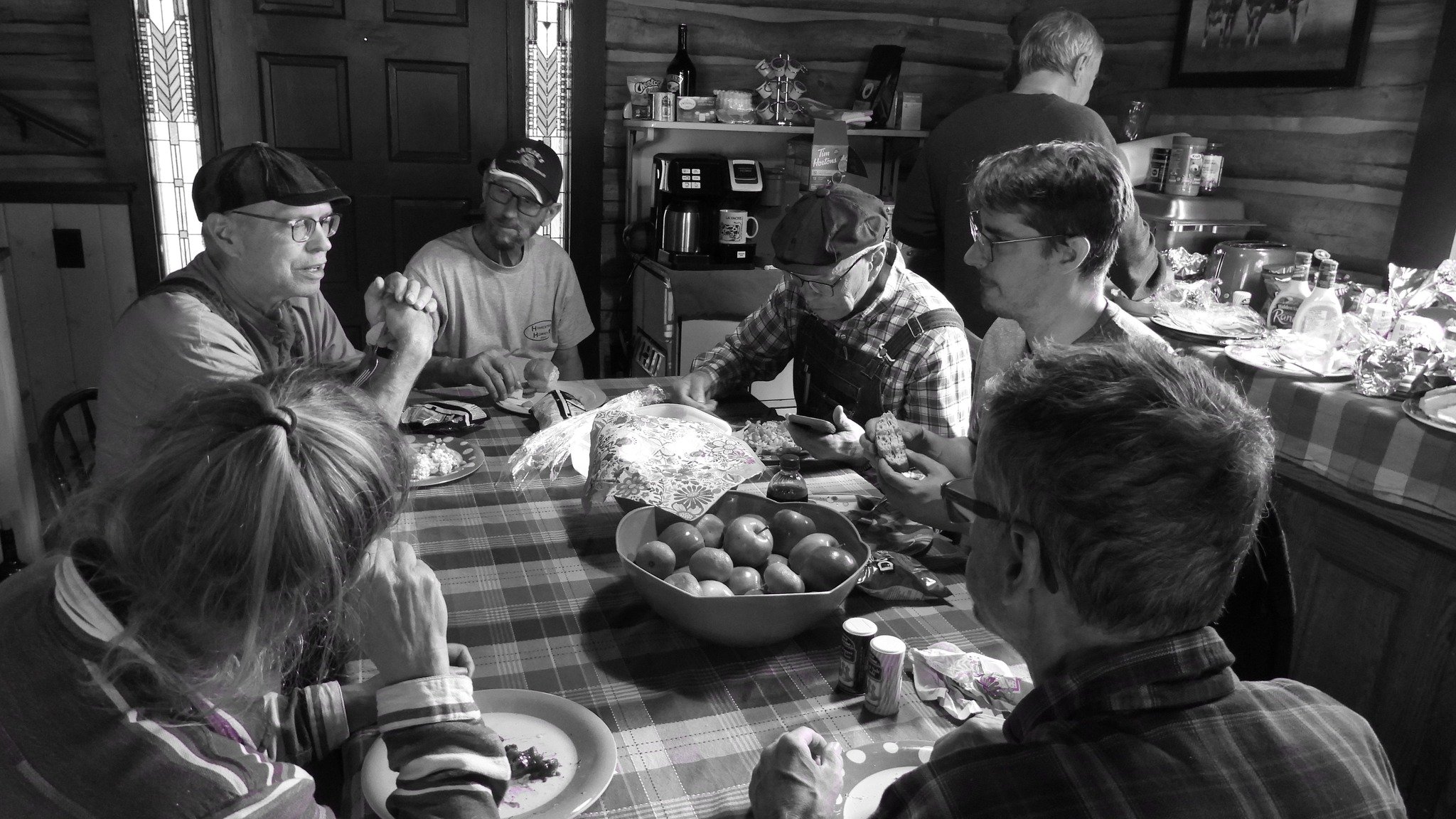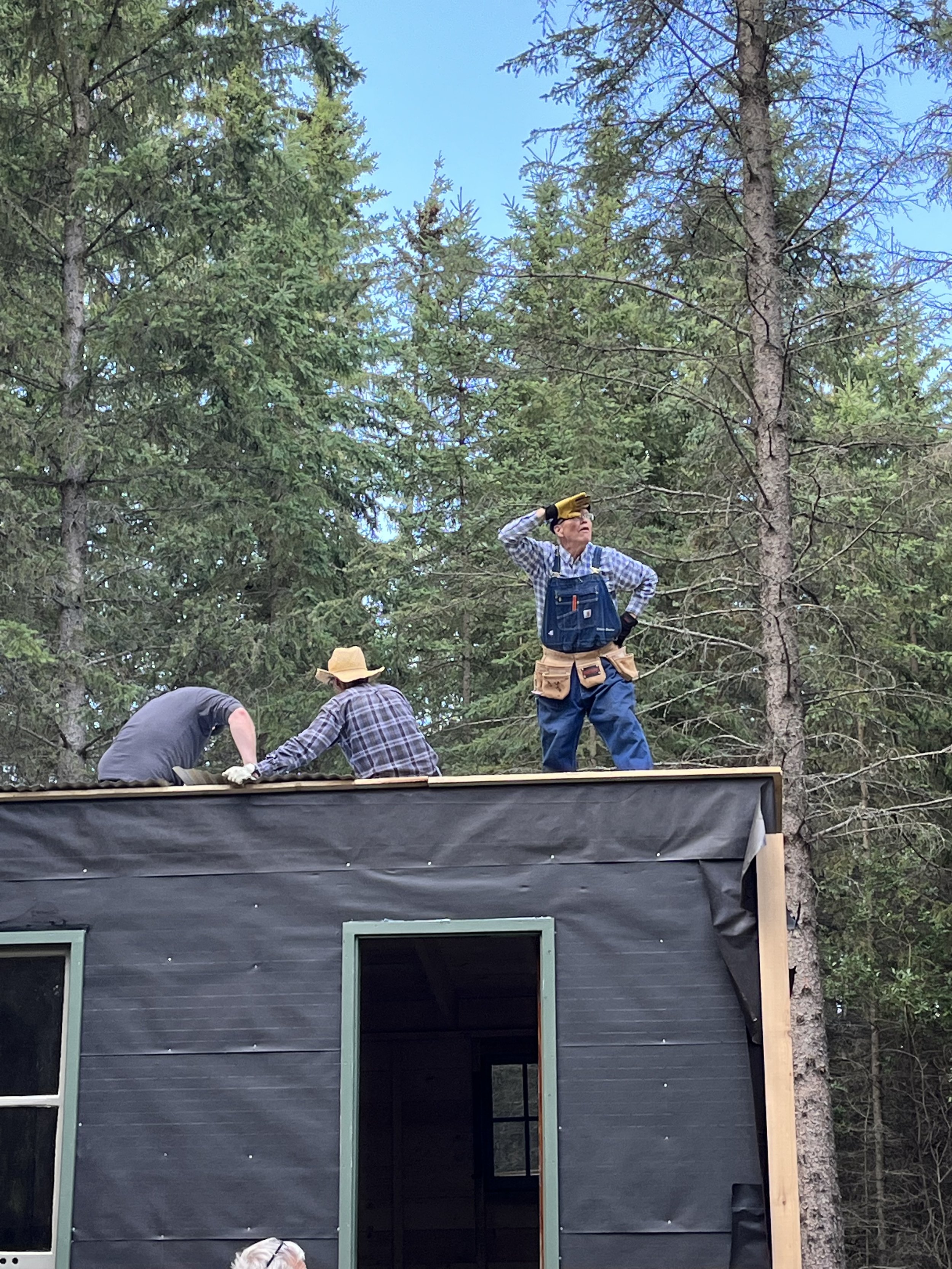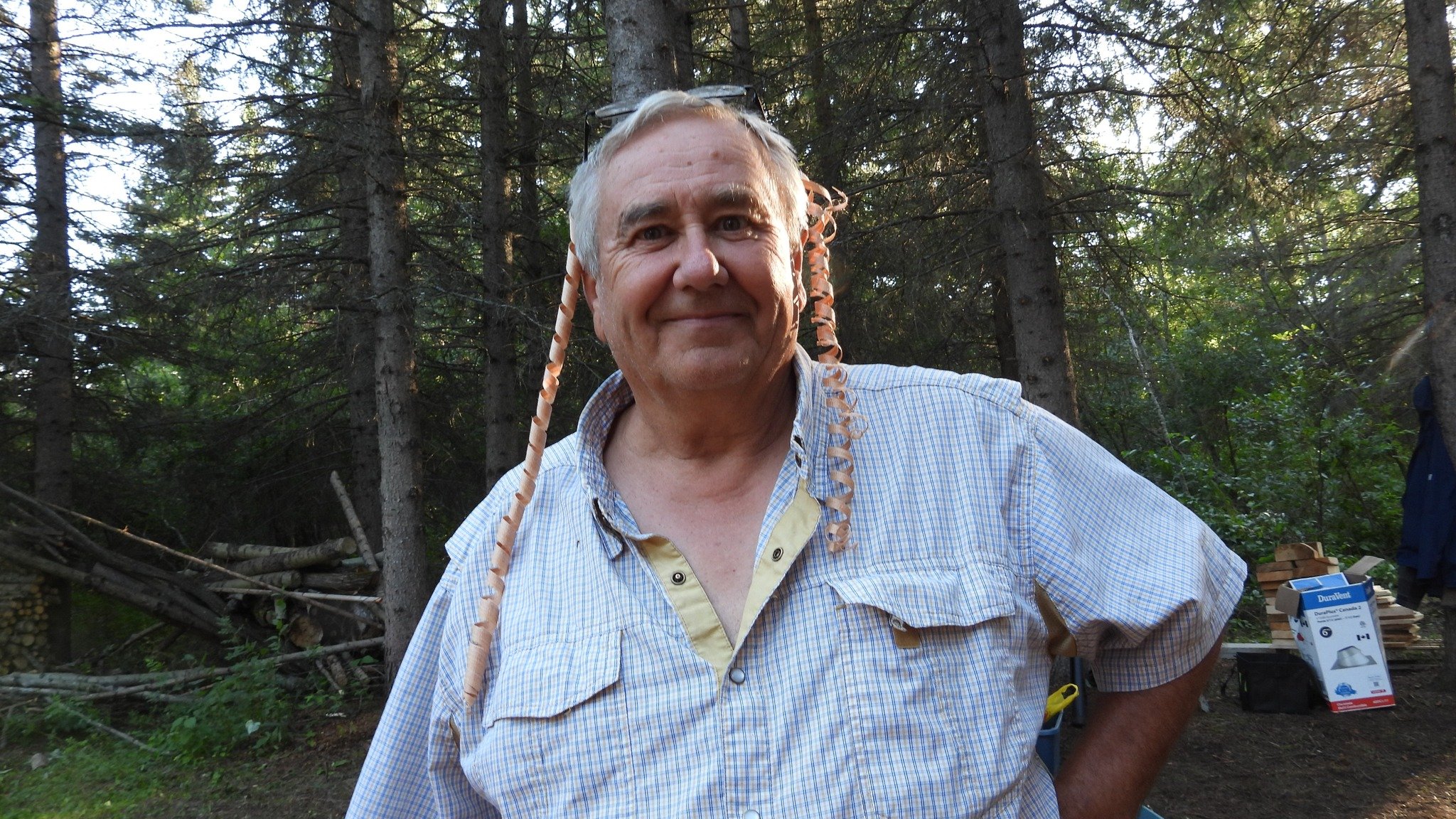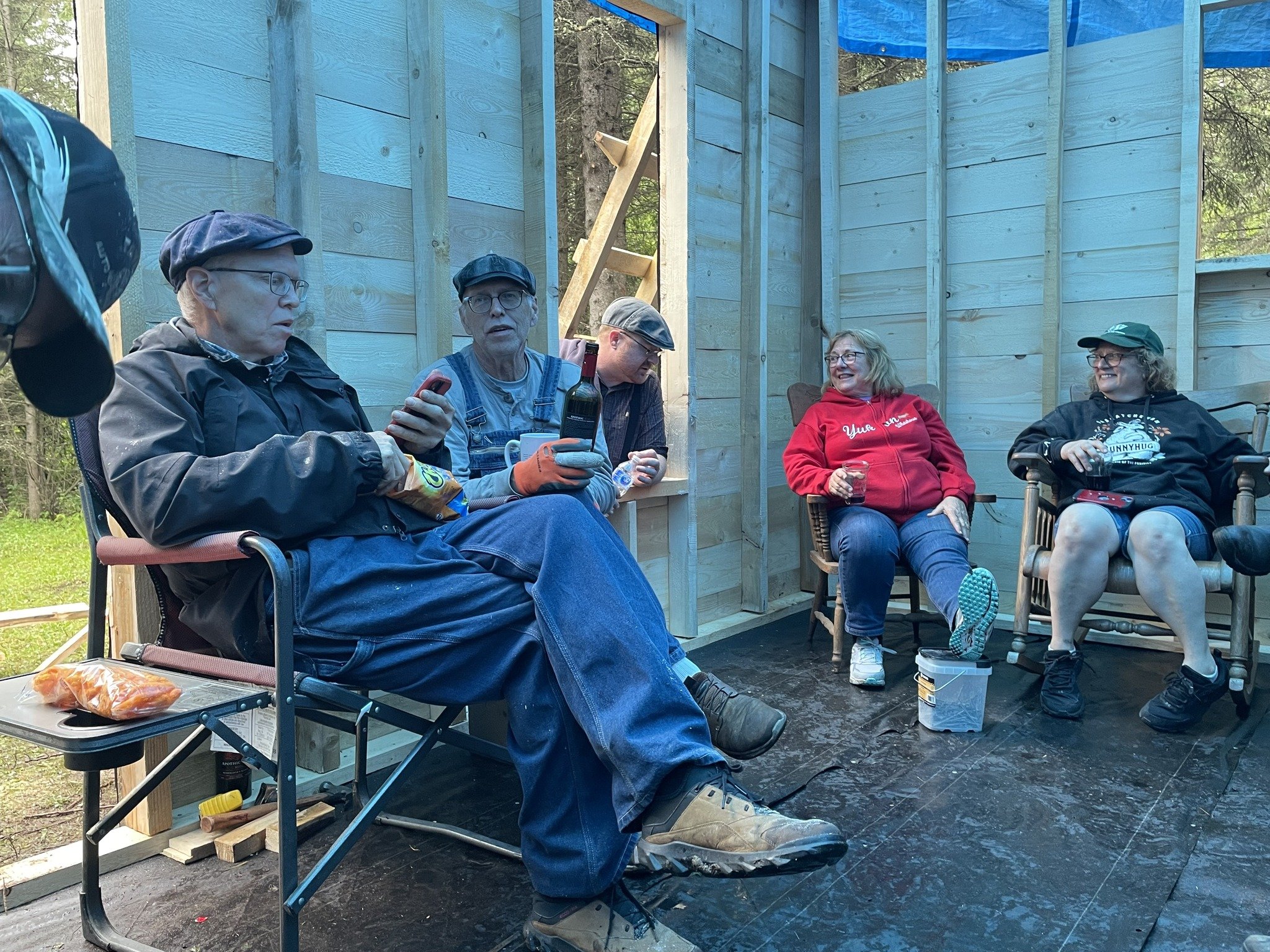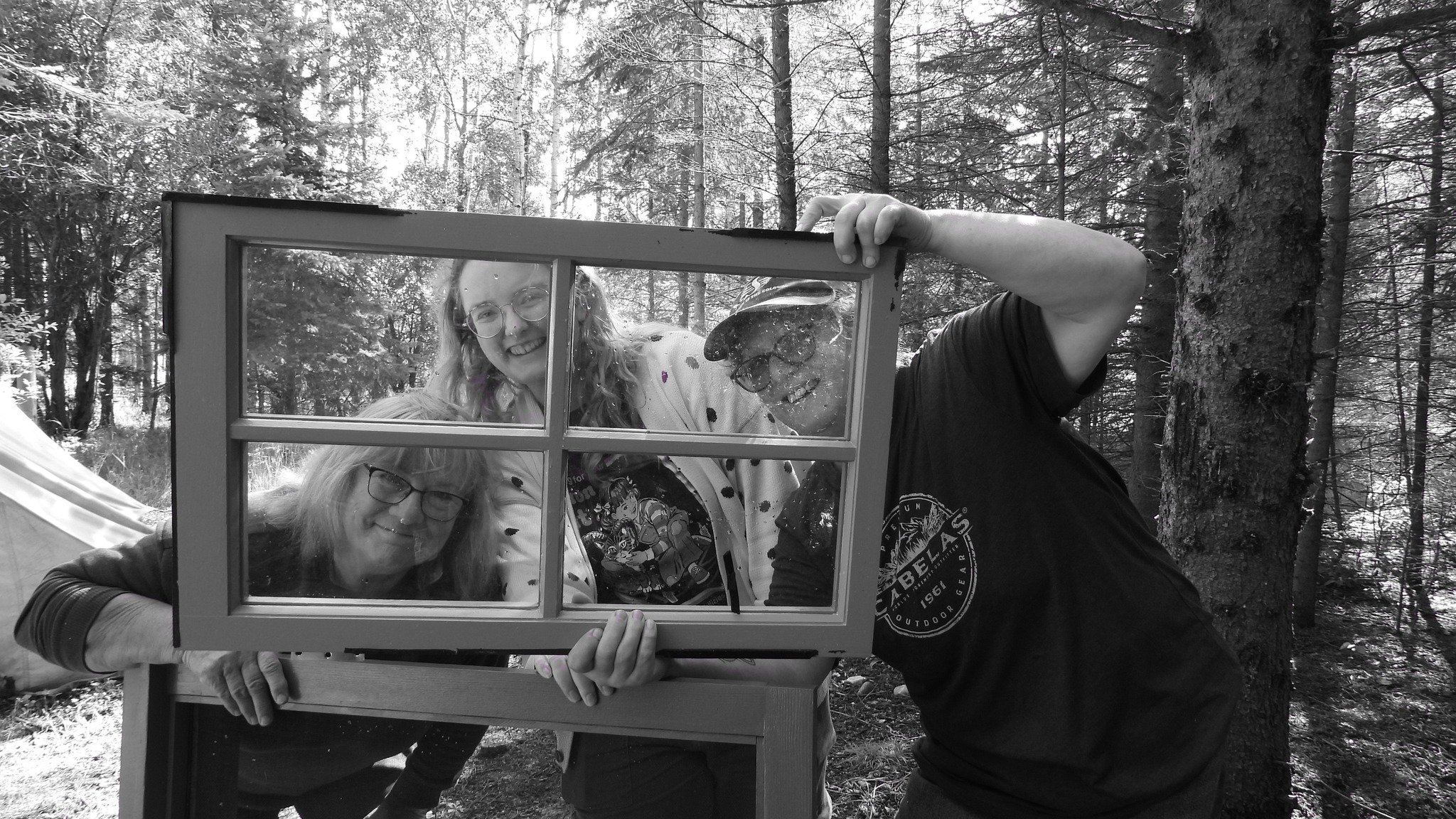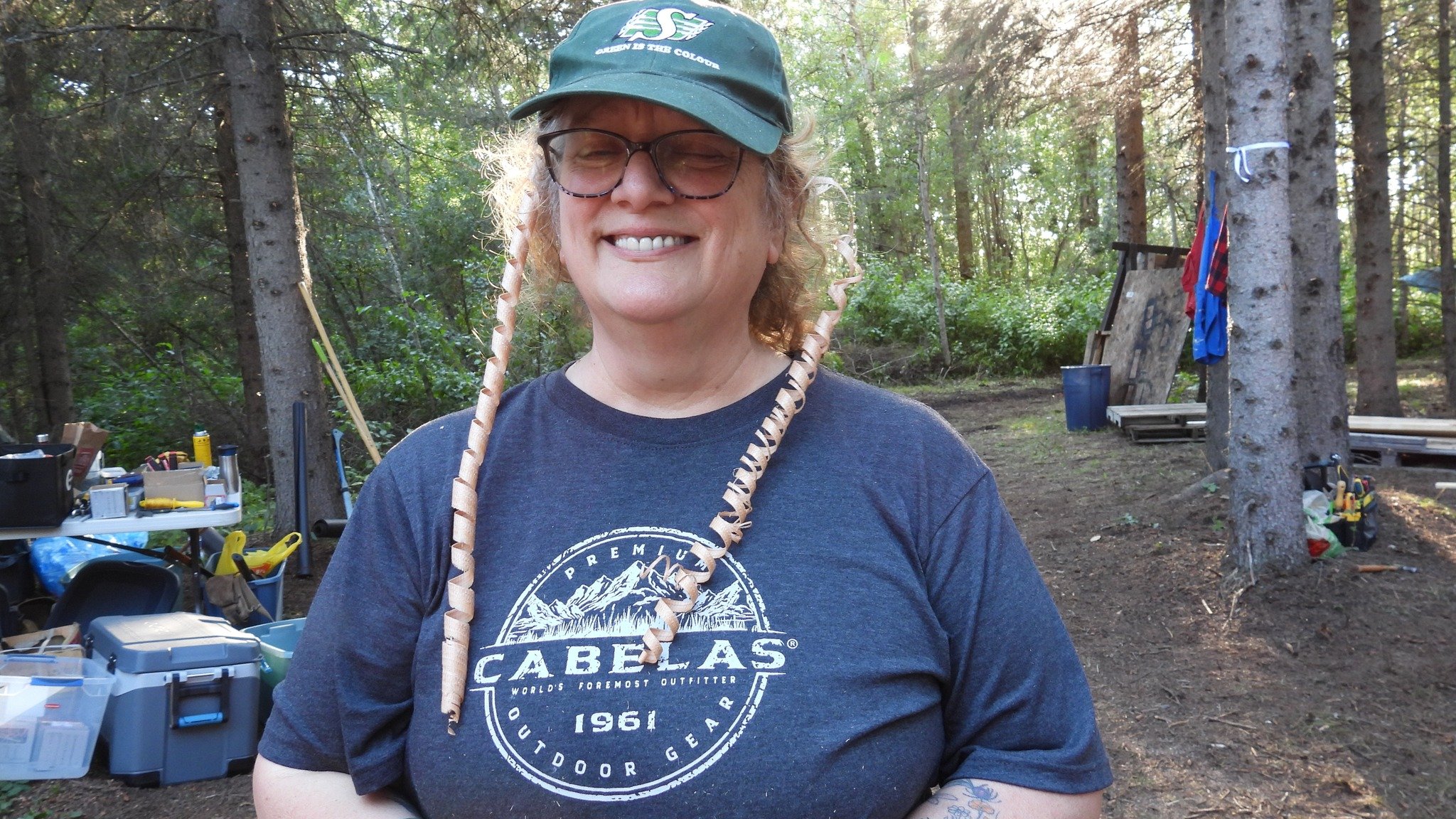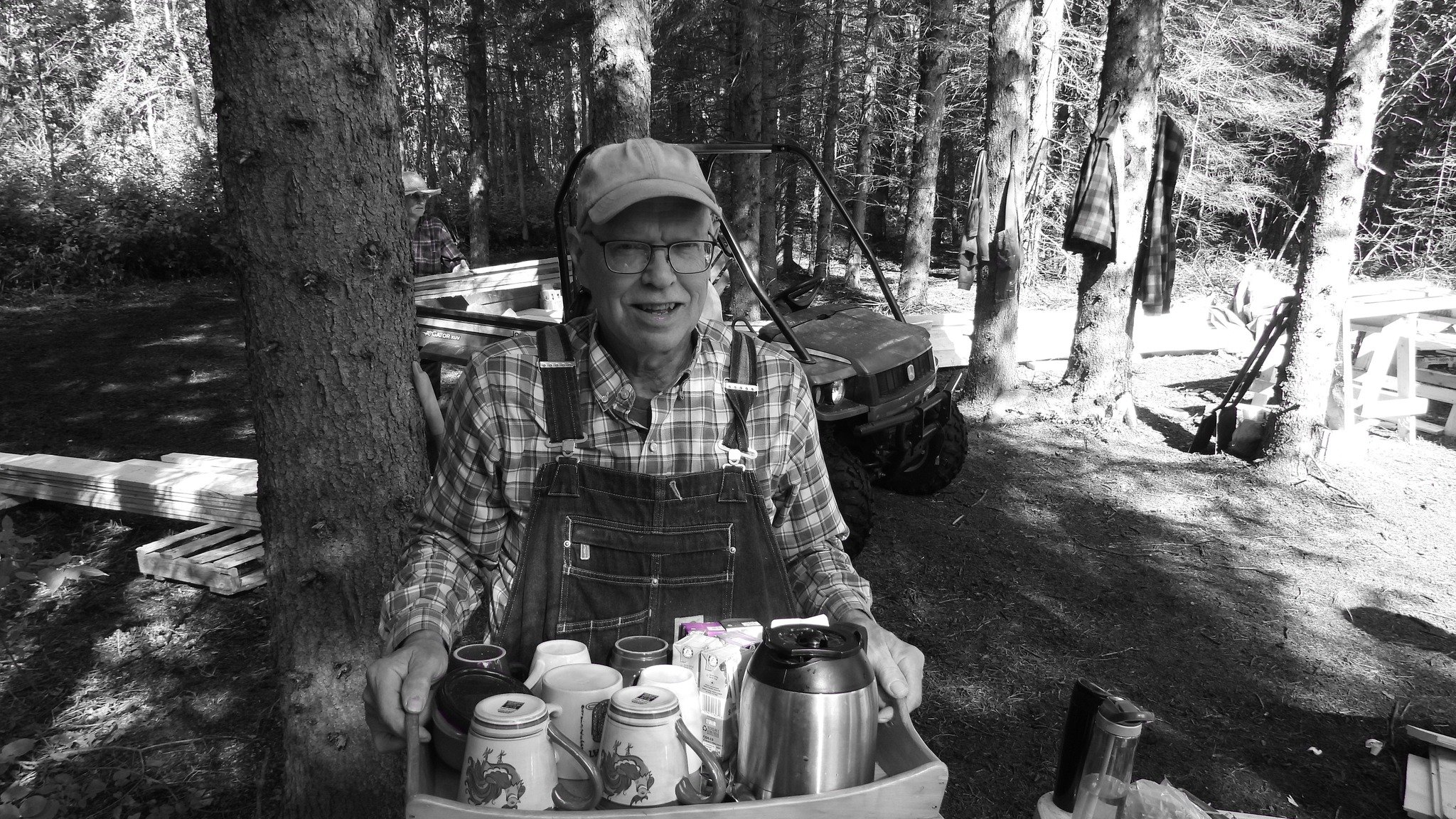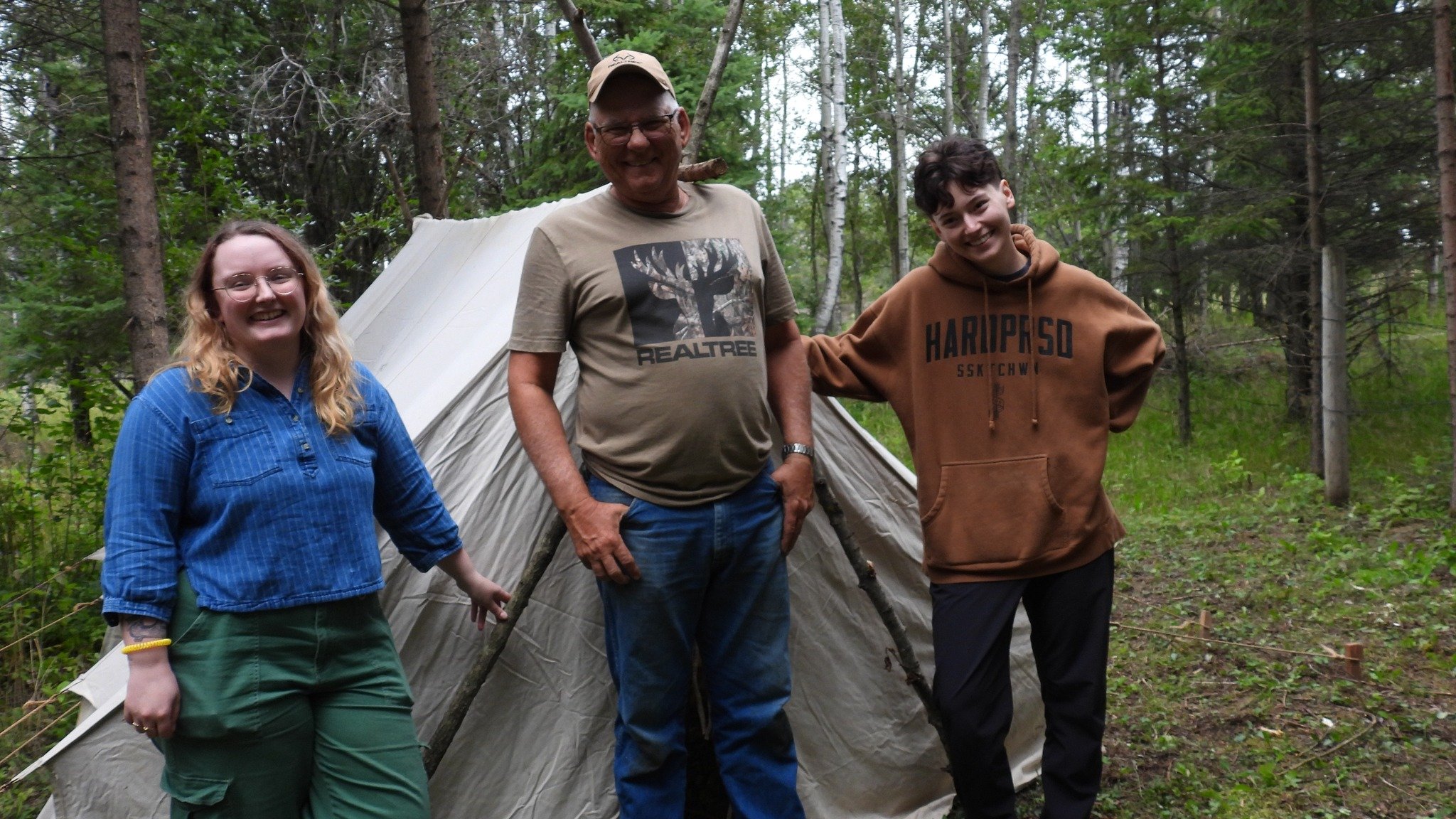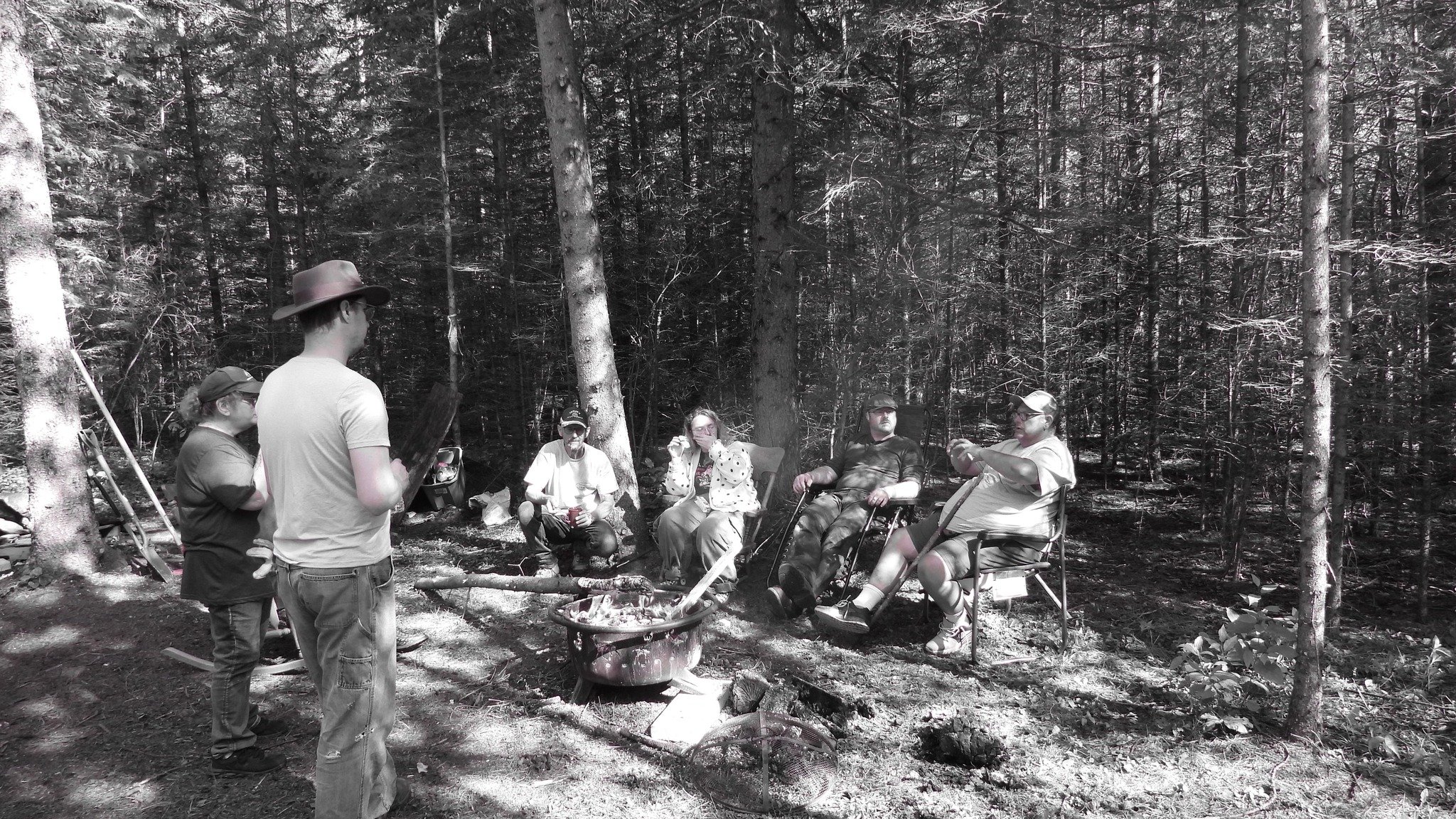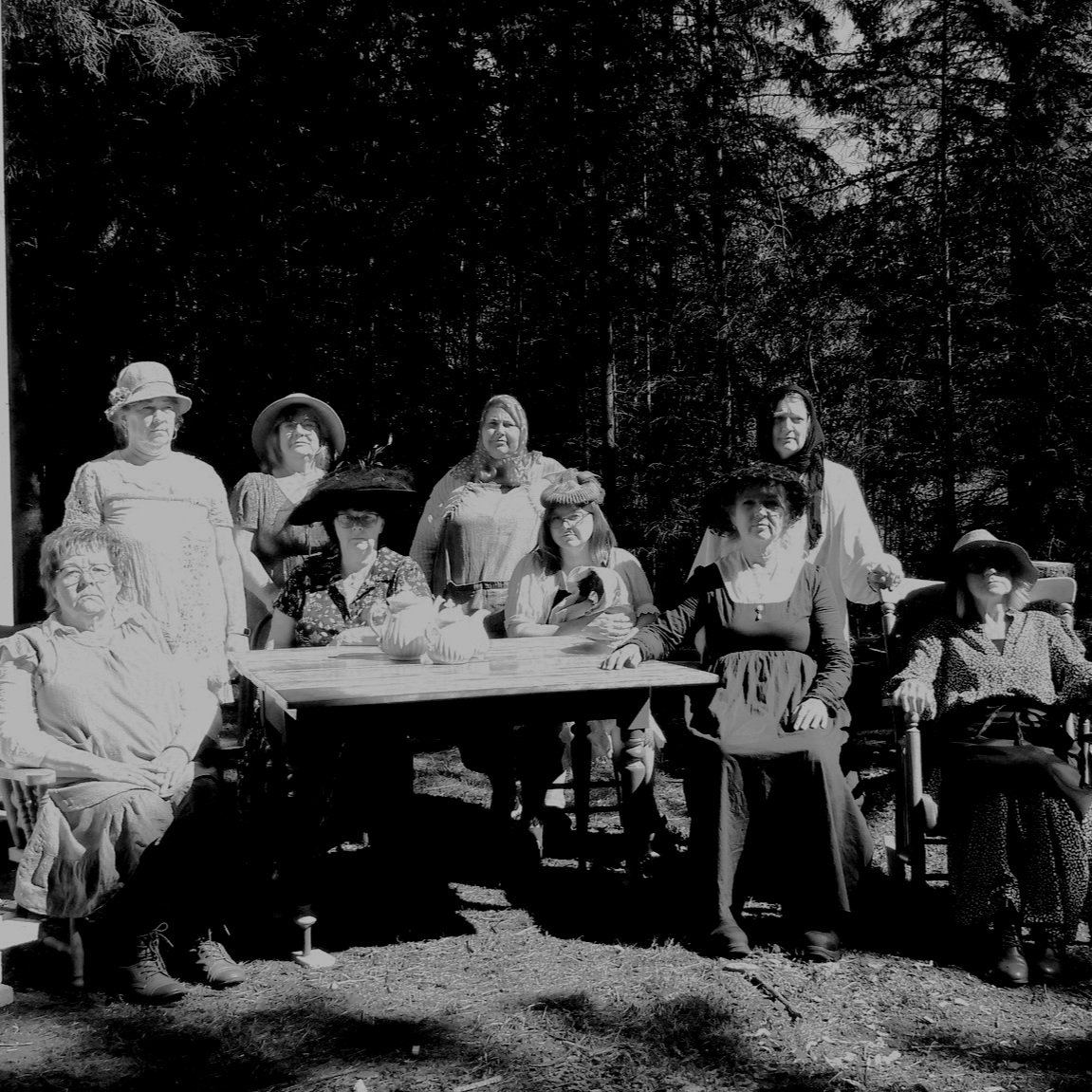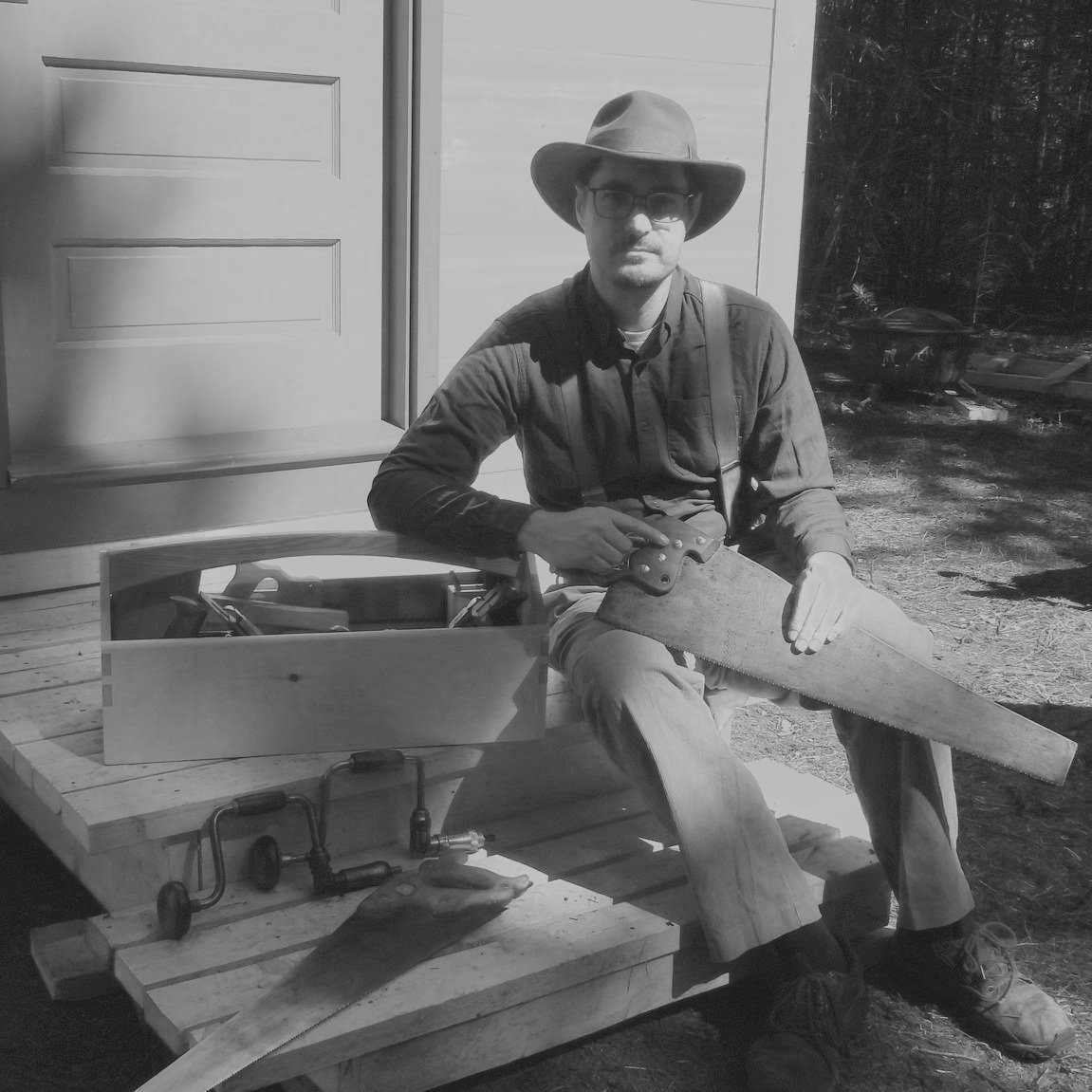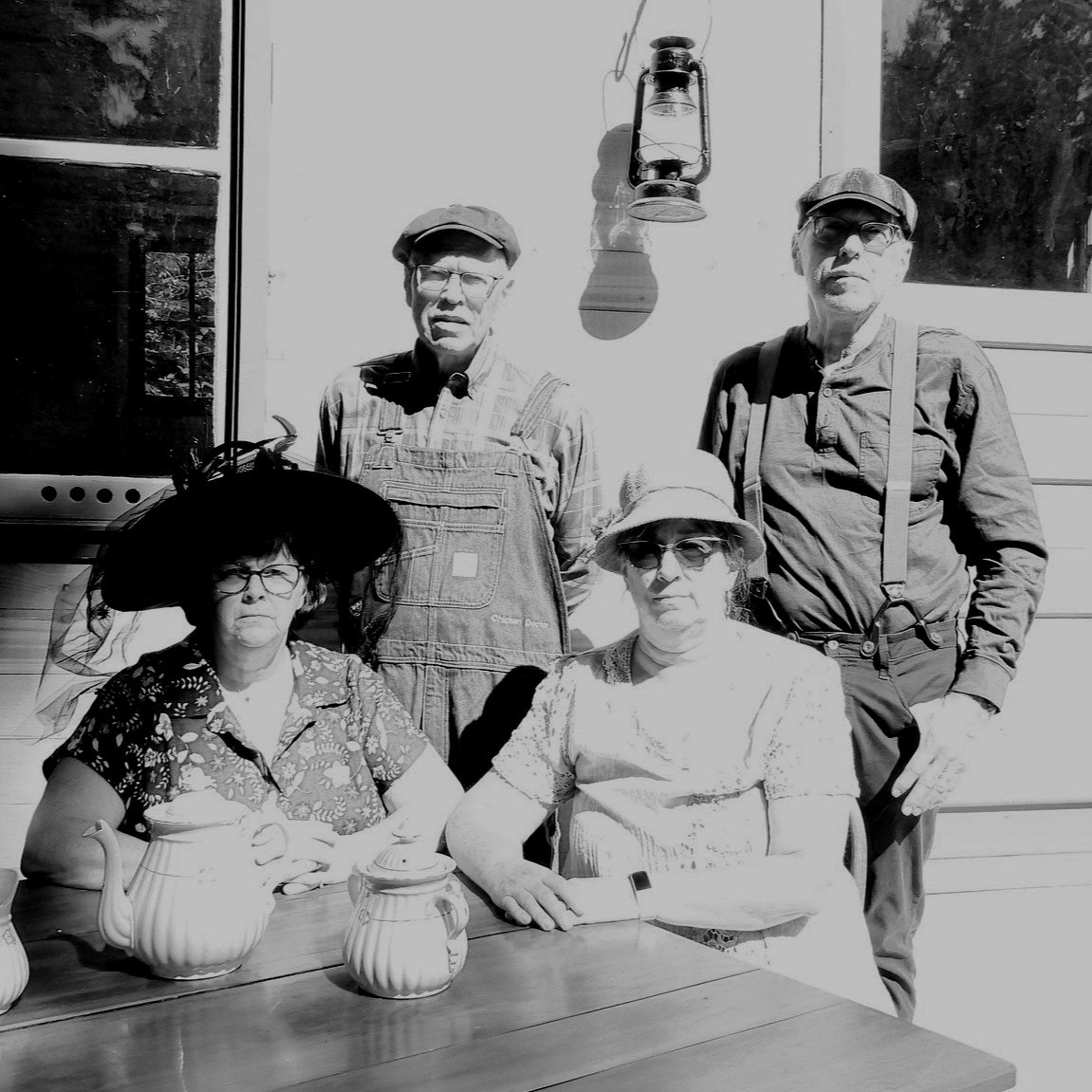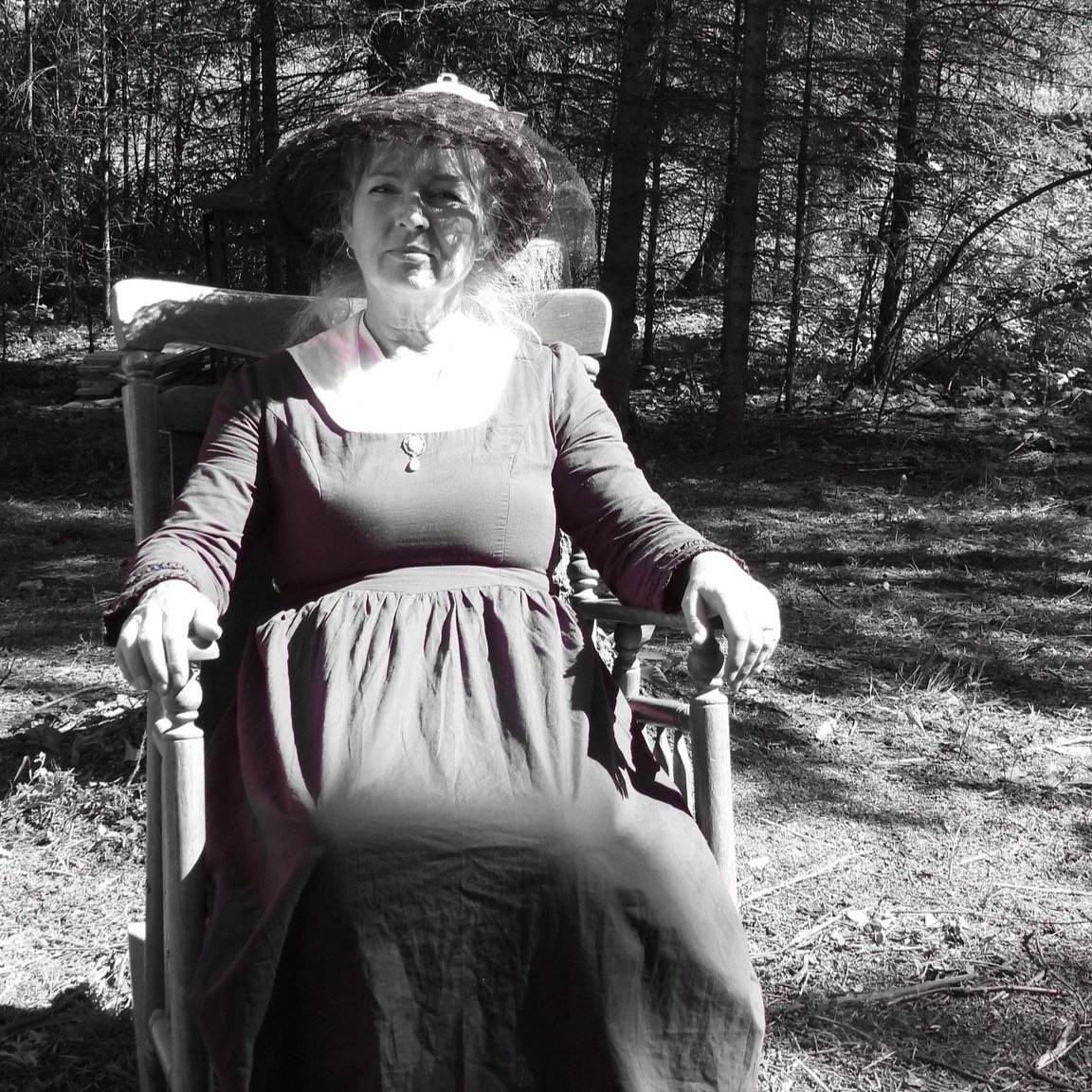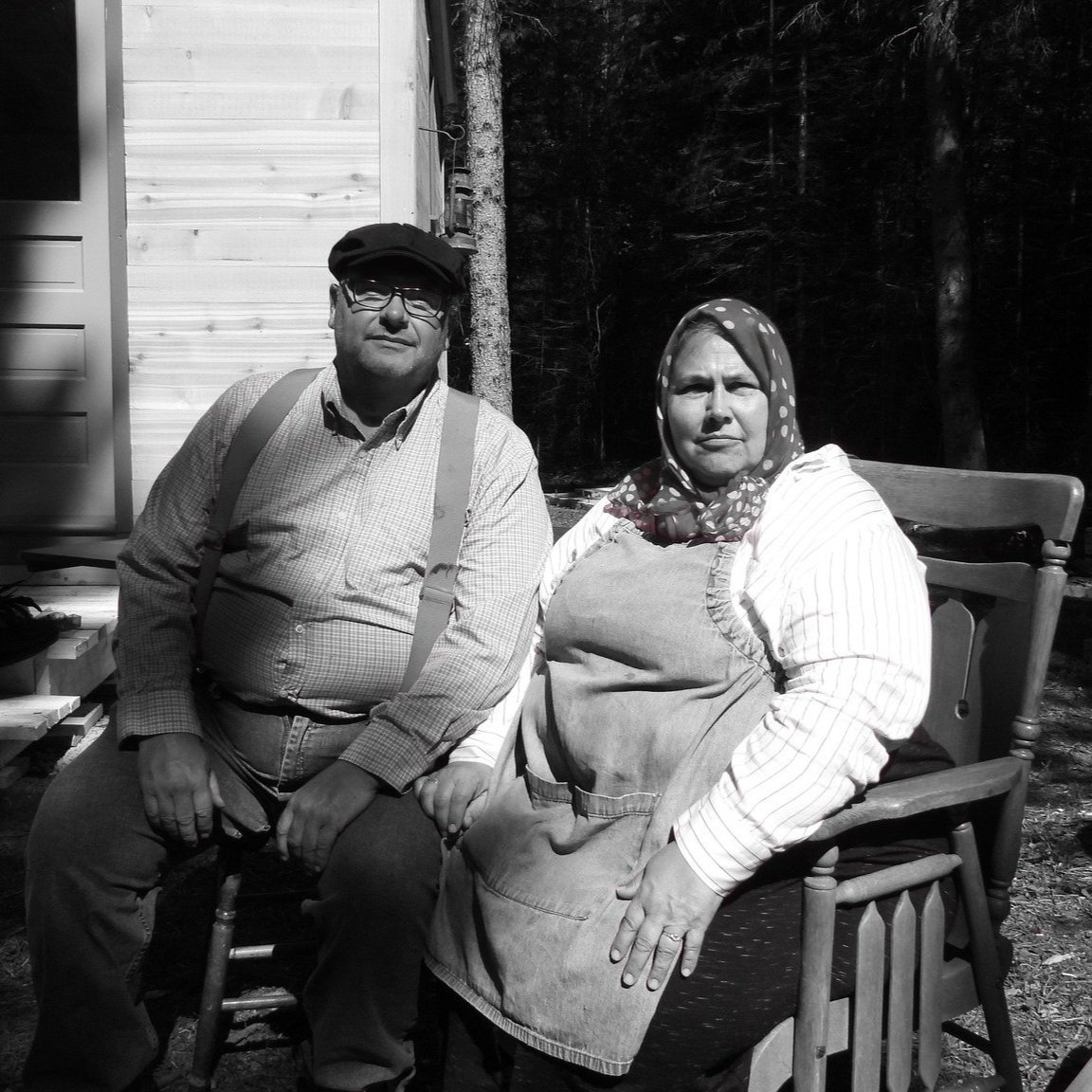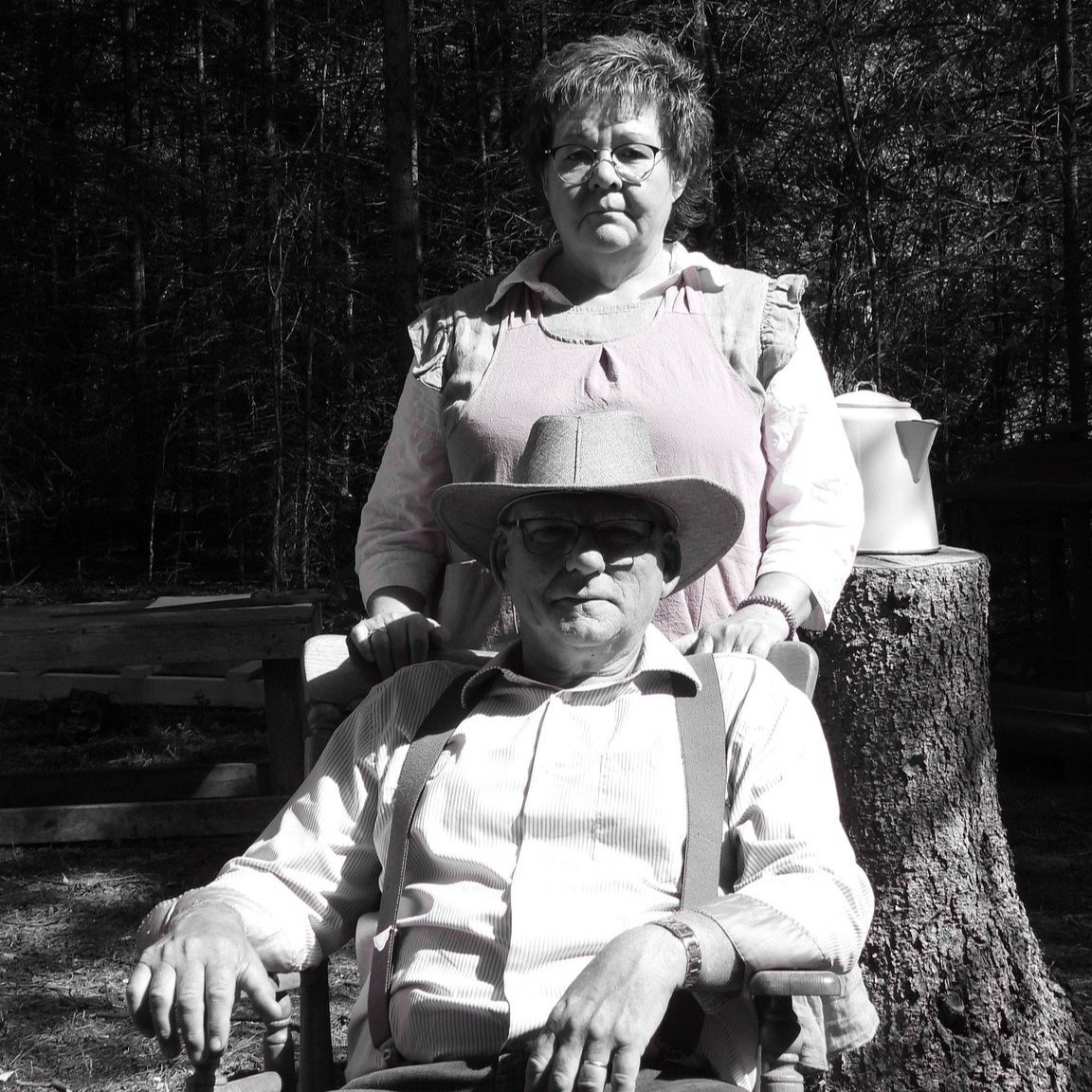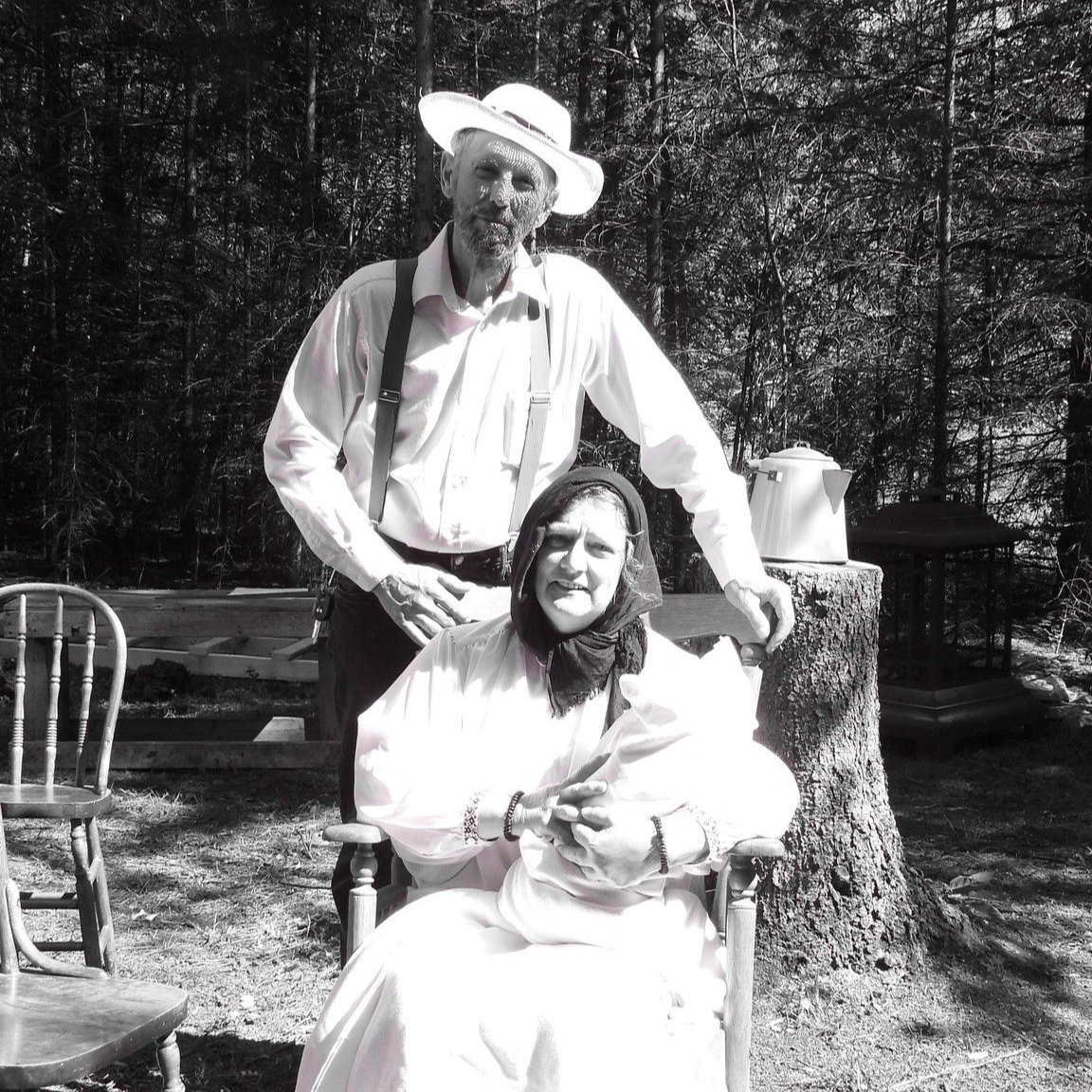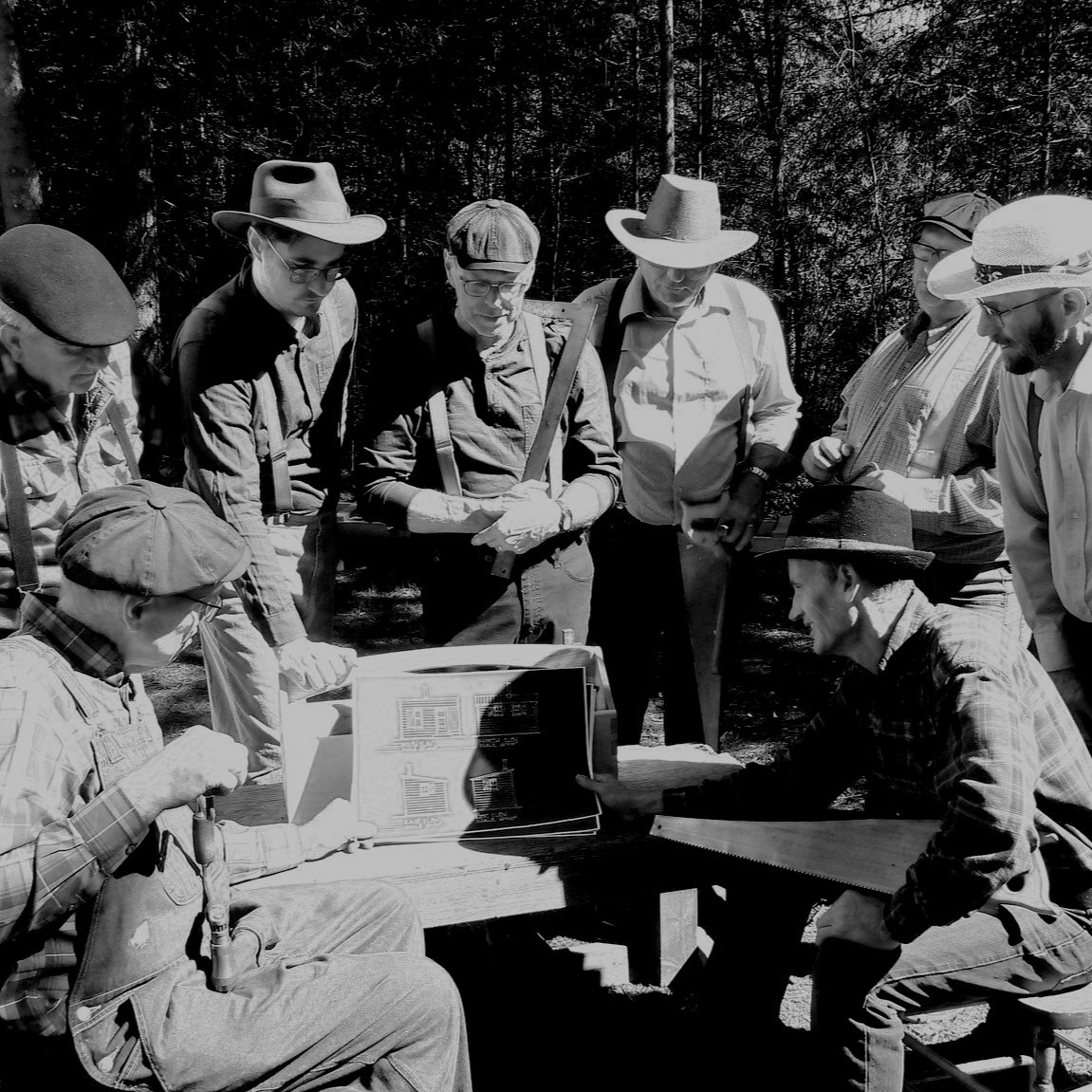Back to the Past: 1910 Homestead Build in 2023
Once the cabin was complete, the group dressed up in 1910-esque clothing to create a classic family photo in front of the homestead!
Over three days in August, Frank and John Robinson brought a group of 20 people together for a project that had been years in the planning. The brothers had the idea to design and build a homestead shack and build it with the tools of the time. The desire to build came from their grandfather's dream, who when he came to Saskatchewan built a sod house, then passed away before the wooden house could be built, which would have been the next step of a homesteader. They finished what their grandfather started on Frank’s land in rural Alberta, Lamont County, with the help of friends, family, and coworkers interested in the 1910 building experience.
REM was able to be part of this build. We brought along a 1913 wall tent from the collection, period specific to the homestead. It was put up the first day and used to shield the homestead’s windows and chairs from the rainy summer days. We were lucky to have a few builders who had used tents of a similar design to help put up the tent, and find some logs that would work instead of the poles that would have originally been with the tent. We were very surprised to find out that a canvas tent from over 100 years ago still kept the inside of the tent dry. The tent was donated to the museum by Kent Dowie in 1989, and was used by his father on camping trips to Last Mountain Lake. John Robinson was excited to hear that we were bringing the tent along, as builds like this would have started with the builders staying in tents similar to this one.
Before the build began, Indigenous Elder Leona Makokis held a pipe ceremony and blessed the site. It was a meaningful and emotional ceremony. The elder explained the reason for everything that was part of the ceremony and they passed the pipe around with people either taking a puff of the pipe or holding it to their heart, then they passed around berries and tea. Individual’s shared what the build meant to them, which ranged from a connection to community to John sharing it was to carrying on what his grandfather never got to do. Janet Robinson (John’s partner) thought that the ceremony was very important to the build and imagines what it would have been like for indigenous people to be part of every land acquisition when homesteaders first started building.
The build was accurate as possible to a 1910 build, from the designs being the classic blue prints to even bringing wood into the forest construction site by replica 1910 crane wagon drawn by Clydesdale horses. There were no power tools on the building site, it was built using wooden rulers, handsaws, hand drills, screwdrivers, hammers, and nails.

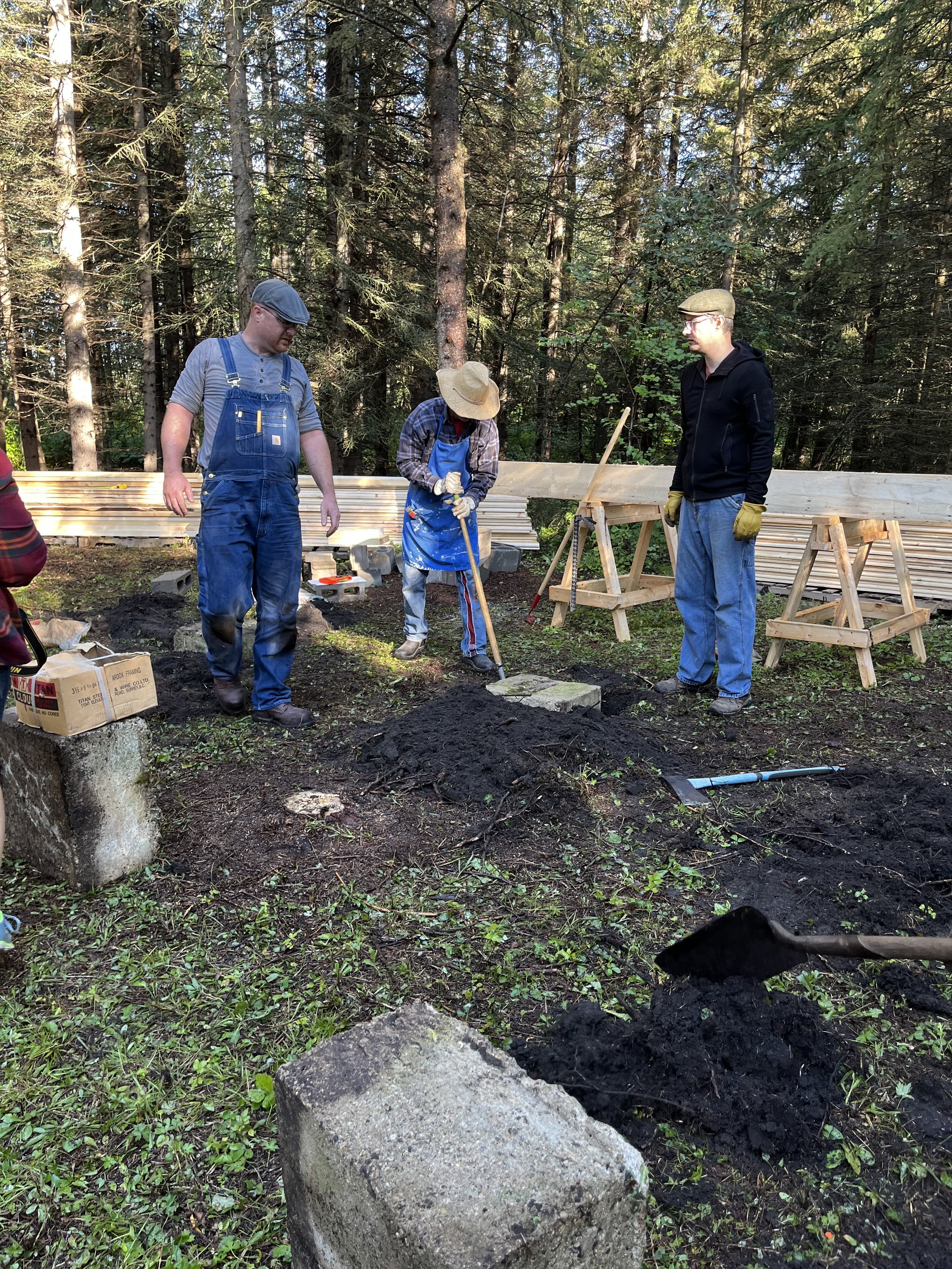
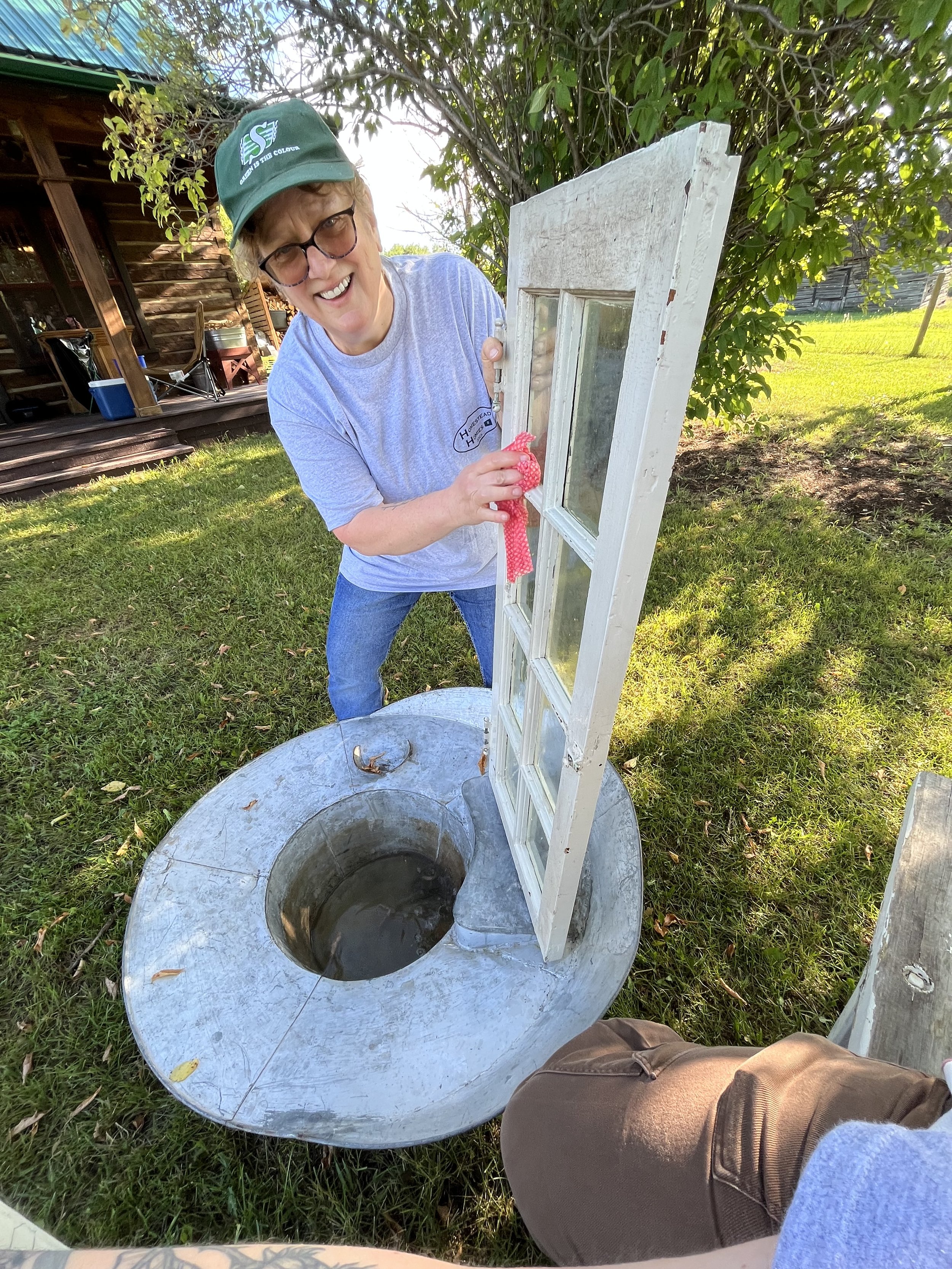
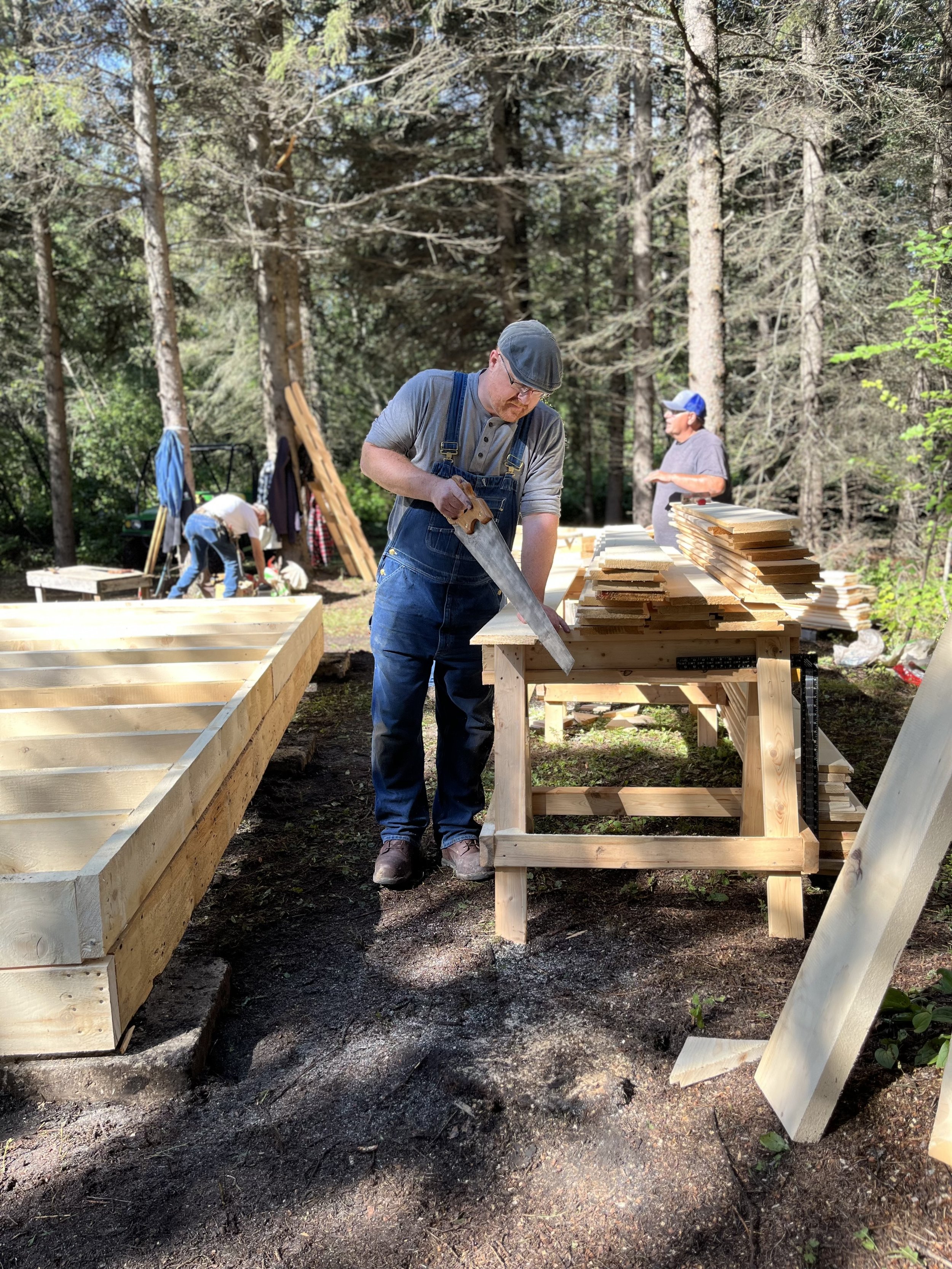
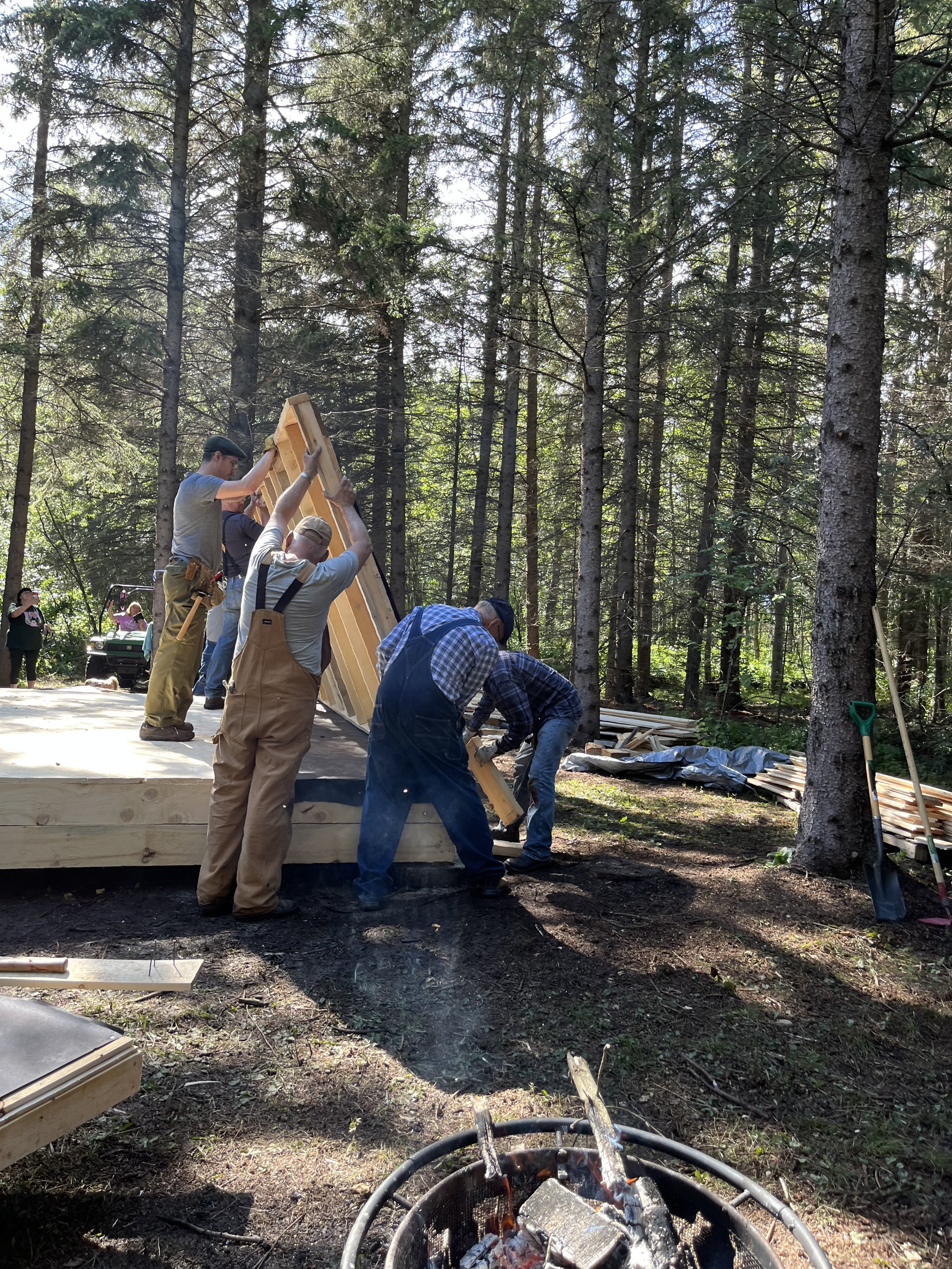
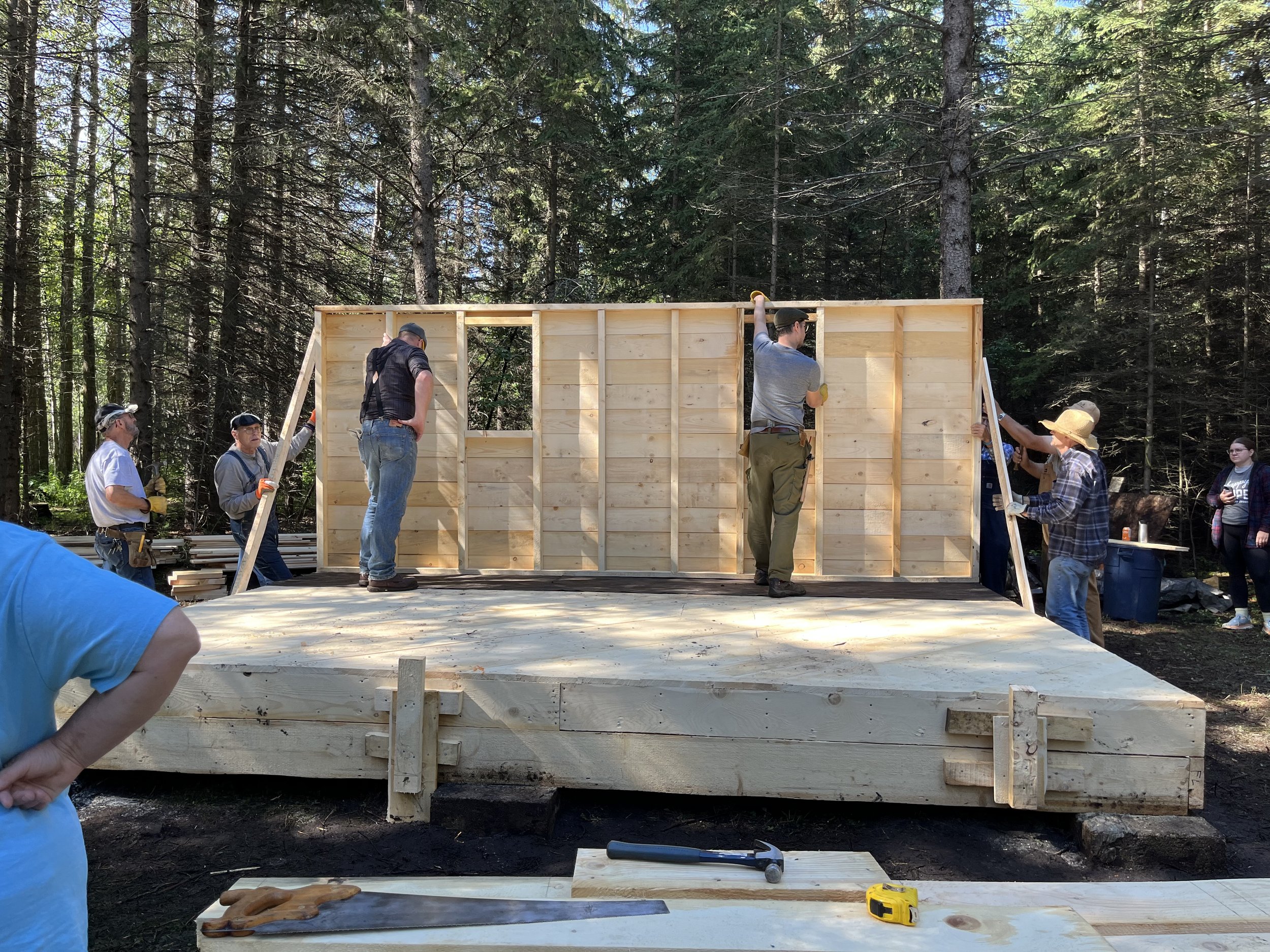
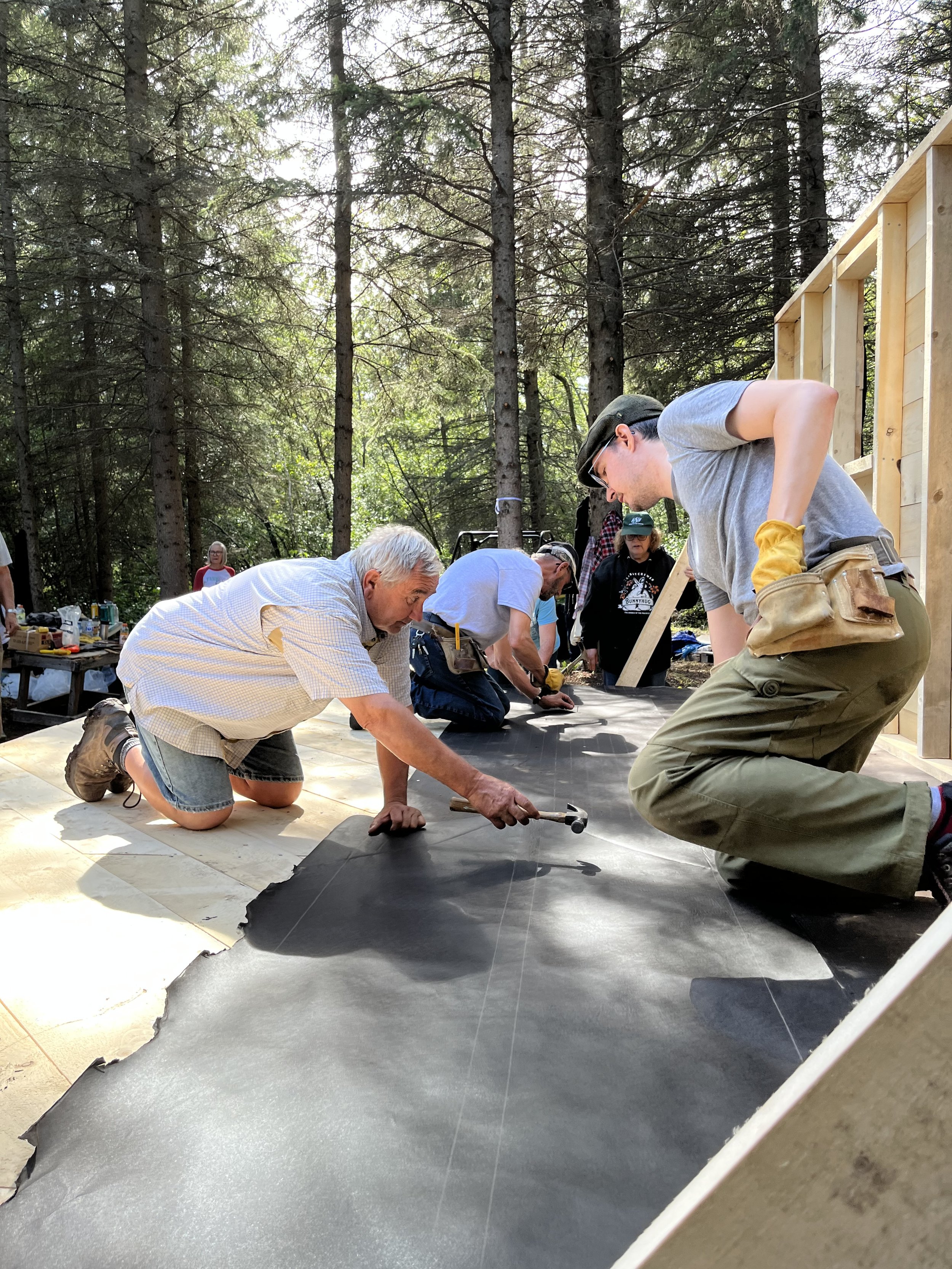
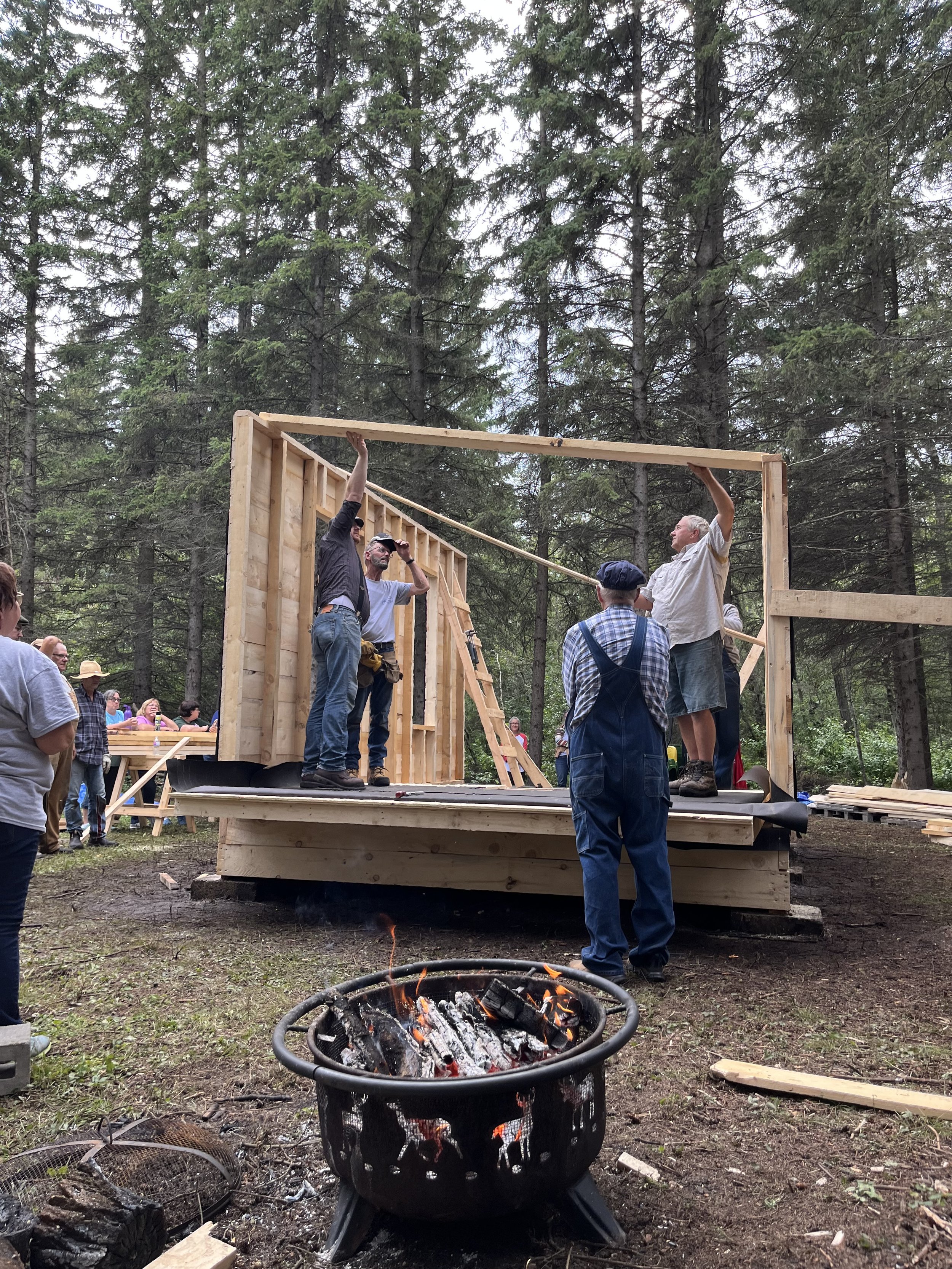

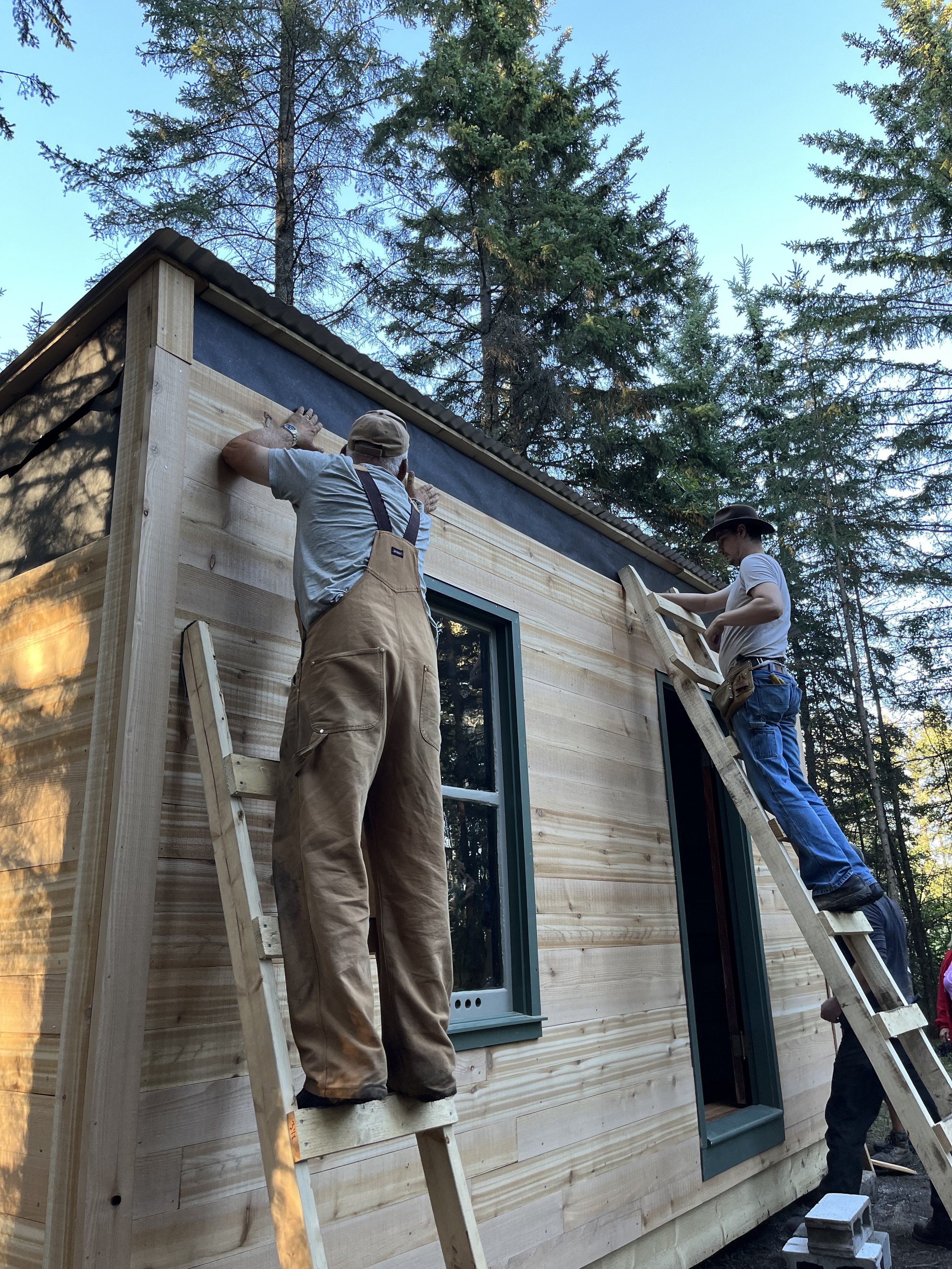
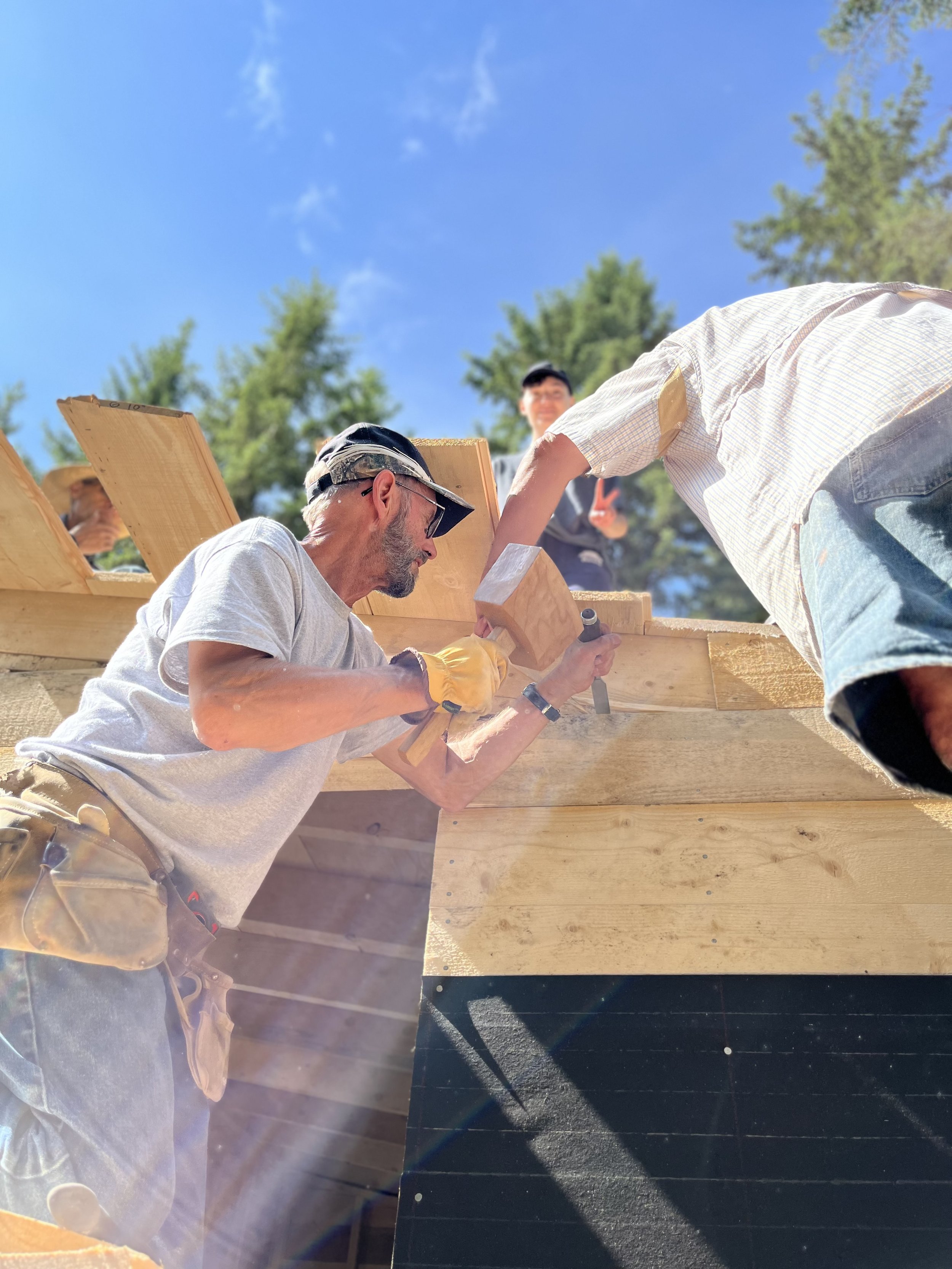
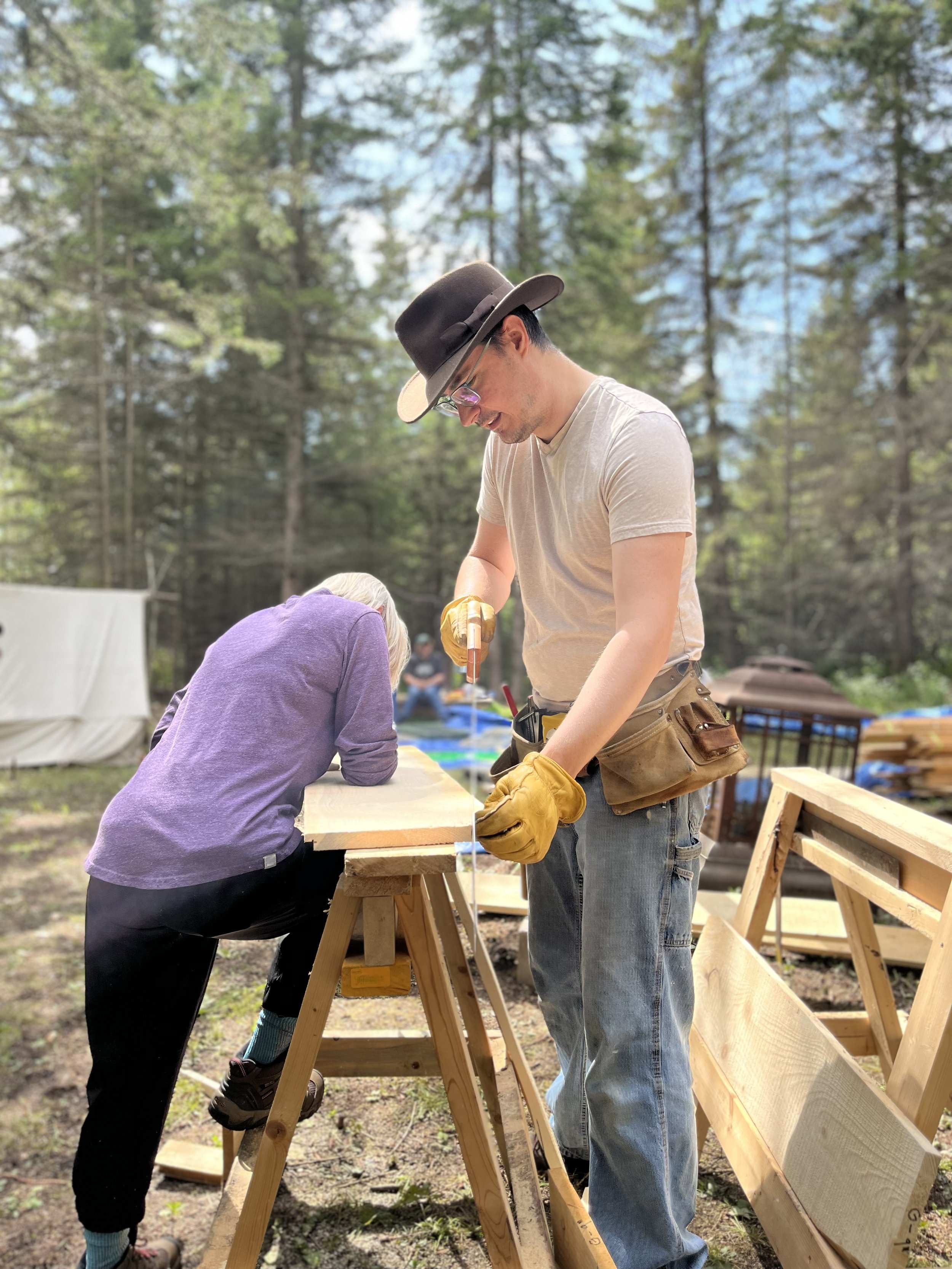
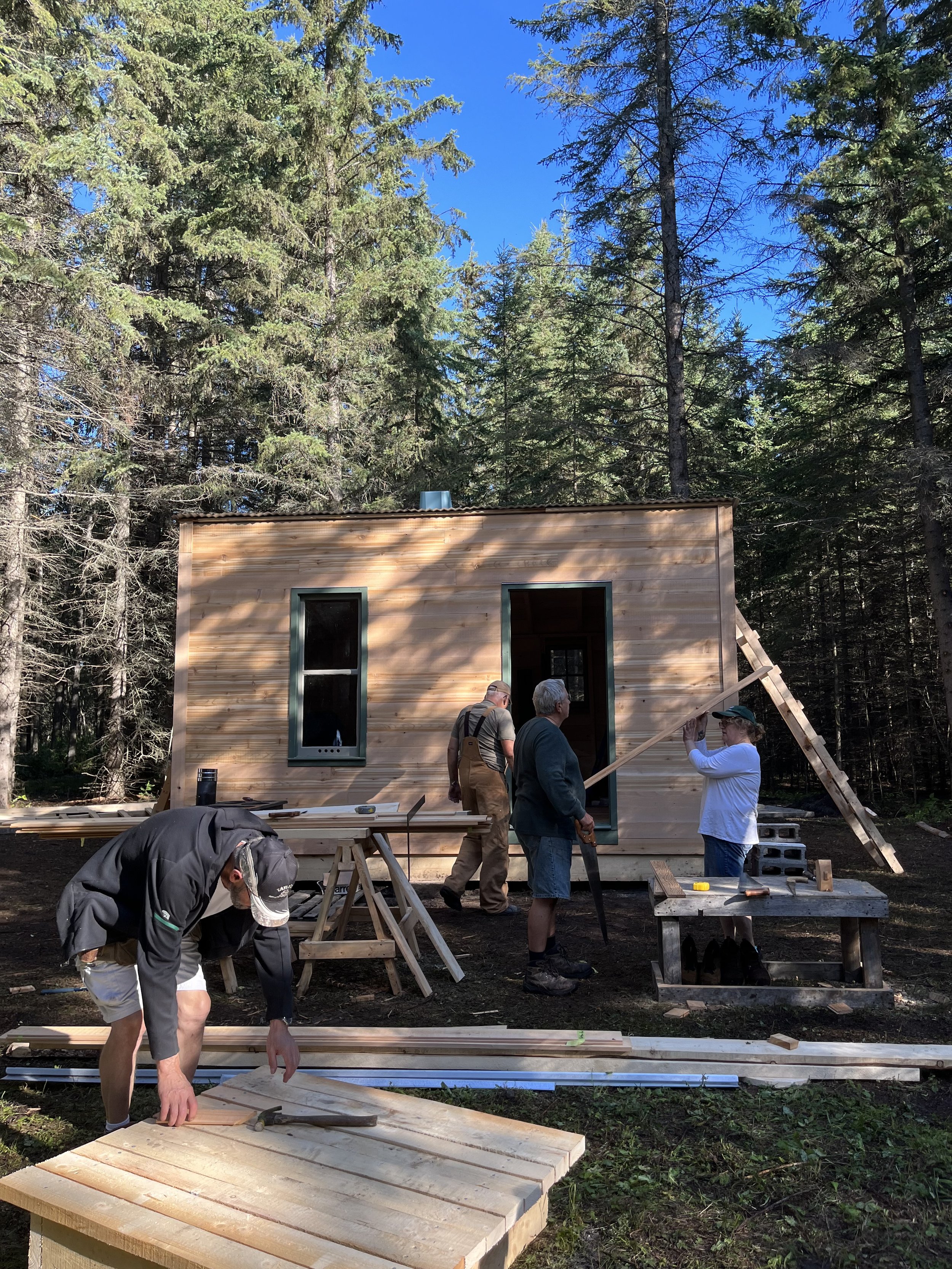
The heart of the homestead build was the community it created. On the same land, there was a 100-year-old log cabin that Frank restored, and this is where we ate, drank and some slept. Some mornings we would be woken up by the old organ playing through the farm yard, while at lunchtime you really got the farm experience when you would hear a bell ring to come get fed for lunch, while at night there was laughter pouring out the windows of the log cabin from all the stories that were being told. It was amazing and inspiring seeing the community brought together for the idea, even though many people were brought there for different reasons. The group of 20 builders all came for different reasons, REM came to experience the connection to history, but once we got there we realized that it was a lot more about the community of amazing volunteers. We spoke to many of the individuals to find out more about why they were there. Below you can hear them speak fully on the experience. We found that many liked that the homestead experience connected them to their ancestors who came to the Prairies in the early 20th century. We were able to experience a portion of the hard work it made to create a home by hand, and dip our toes into experiencing a period in time where you are not distracted constantly by a screen. It was a fun unique experience, it was adult playtime with a purpose. Some of the fun times can be seen below.
Once the cabin was finished, all of the volunteers got to dress up as 1910 homesteaders. Here are some of those images!



